
APRIL 2024
THE MARQUETTE JOURNAL
EPLAYINGWITHFIREPLAYINGWITHFIREPLAYINGWITHFIREPLAYINGWITHFIREPLAYINGWITHFIRE
IREPLAYINGWITHFIREPLAYINGWITHFIREPLAYINGWITHFIREPLAYINGWITHFIREPLAYINGWITHF FIREPLAYINGWITHFIREPLAYINGWITHFIREPLAYINGWITHFIREPLAYINGWITHFIREPLAYINGWITH HFIREPLAYINGWITHFIREPLAYINGWITHFIREPLAYINGWITHFIREPLAYINGWITHFIREPLAYINGWIT
ITHFIREPLAYINGWITHFIREPLAYINGWITHFIREPLAYINGWITHFIREPLAYINGWITHFIREPLAYINGW WITHFIREPLAYINGWITHFIREPLAYINGWITHFIREPLAYINGWITHFIREPLAYINGWITHFIREPLAYING
GWITHFIREPLAYINGWITHFIREPLAYINGWITHFIREPLAYINGWITHFIREPLAYINGWITHFIREPLAYIN
INGWITHFIREPLAYINGWITHFIREPLAYINGWITHFIREPLAYINGWITHFIREPLAYINGWITHFIREPLAY AYINGWITHFIREPLAYINGWITHFIREPLAYINGWITHFIREPLAYINGWITHFIREPLAYINGWITHFIREPL PLAYINGWITHFIREPLAYINGWITHFIREPLAYINWITHFIREPLAYINGWITHFIREPLAYINGWITHFIREP
EPLAYINGWITHFIREPLAYINGWITHFIREPLAYINGWITHFIREPLAYINGWITHFIREPLAYINGWITHFIR
IREPLAYINGWITHFIREPLAYINGWITHFIREPLAYINGWITHFIREPLAYINGWITHFIREPLAYINGWITH FIREPLAYINGWITHFIREPLAYINGWITHFIREPLAYINGWITHFIREPLAYINGWITHFIREPLAYINGWITH HFIREPLAYINGWITHFIREPLAYINGWITHFIREPLAYINGWITHFIREPLAYINGWITHFIREPLAYINGWIT
ITHFIREPLAYINGWITHFIREPLAYINGWITHFIREPLAYINGWITHFIREPLAYINGWITHFIREPLAYINGW
WITHFIREPLAYINGWITHFIREPLAYINGWITHFIREPLAYINGWITHFIREPLAYINGWITHFIREPLAYIN
GWITHFIREPLAYINGWITHFIREPLAYINGWITHFIREPLAYINGWITHFIREPLAYINGWITHFIREPLAYING INGWITHFIREPLAYINGWITHFIREPLAYINGWITHFIREPLAYINGWITHFIREPLAYINGWITHFIREPLAY AYINGWITHFIREPLAYINGWITHFIREPLAYINGWITHFIREPLAYINGWITHFIREPLAYINGWITHFIREPL PLAYINGWITHFIREPLAYINGWITHFIREPLAYINWITHFIREPLAYINGWITHFIREPLAYINGWITHFIREP EPLAYINGWITHFIREPLAYINGWITHFIREPLAYINGWITHFIREPLAYINGWITHFIREPLAYINGWITHFIR IREPLAYINGWITHFIREPLAYINGWITHFIREPLAYINGWITHFIREPLAYINGWITHFIREPLAYINGWITH FIREPLAYINGWITHFIREPLAYINGWITHFIREPLAYINGWITHFIREPLAYINGWITHFIREPLAYINGWITH HFIREPLAYINGWITHFIREPLAYINGWITHFIREPLAYINGWITHFIREPLAYINGWITHFIREPLAYINGWIT
ITHFIREPLAYINGWITHFIREPLAYINGWITHFIREPLAYINGWITHFIREPLAYINGWITHFIREPLAYINGW WITHFIREPLAYINGWITHFIREPLAYINGWITHFIREPLAYINGWITHFIREPLAYINGWITHFIREPLAYIN GWITHFIREPLAYINGWITHFIREPLAYINGWITHFIREPLAYINGWITHFIREPLAYINGWITHFIREPLAYI
Each song has been paired with their own logo that can be found next to the page number on their respective stories.
Curated in partnership with MUR
‘Burning Up’ - “Oh, What a World” by Kacey Musgraves
‘Making
‘Fracturing Stigmas’ - “Respect” by Aretha Franklin
‘Swimming Upstream’ - “Wildflower and Barley” by Hozier ft. Allison Russell
‘Voting With Voice’ - “Barking at the Moon” by Jenny Lewis
‘You Have a Place Here’ - “Apartment 402” by girl in red
‘Lessons in Liabilities’ - “This is America” by Childish Gambino
‘Ahead of Her Time’ - “Rhiannon” by Fleetwood Mac
‘Coloring Outside the Lines’ - “Maroon” by Taylor Swift
‘To Love and To Lose’ - “Missed Calls” by Mac Miller
‘Setting The Stage’ - “Art Deco” by Lana Del Rey
‘At What Cost’ - “Hunger” by Florence + the Machine
‘Steps in the Right Direction’ - “The Wind Cries Mary” by Jimi Hendrix
‘Phoenix Rising’ - “The Loneliest Time” by Carly Rae Jepsen
‘Burnout’ - “Turn the Lights Back On” by Billy Joel
‘Sweet Revenge’ - “One Way or Another” by Blondie
To listen on Spotify, go to search and click on the photo icon to scan the code above.
contents...
in Flames”
the Smoke Clears” will appear
10 Burning Up 54 Fashion Spread 50 Burnout 44 Steps in the Right Direction 36 Setting the Stage 32 Coloring Outside the Lines 24 CommentaryLessons in Liabilities 21 CommentaryVoting with Voice 16 Fracturing Stigmas 12 Making Space 20 CommentarySwimming Upstream 52 Sweet Revenge 48 Phoenix Rising 40 At What Cost 34 To Love and Lose 28 Ahead of Her Time 22 CommentaryYou Have a Place Here 6 Letter from the Editor 4 April 2024 5 THE MARQUETTE JOURNAL
Two specially curated photo collections “Up
and “When
throughout
playlist...
Space’ - “Break My Soul” by Beyonce
v l u k f r j h i q j s @ $ ) ^
Captions for each photo created by Grace Cady
CONTRIBUTORS LETTER
Written By Grace Cady
For as long as I can remember, I have loved to write. Sometimes I imagine that I was born with a pen in my hand, thoughts in my head and heaviness in my heart, and I would not change that for the world. It took me a long time to realize that — and maybe even longer to mean it — but I truly would not. Everyone has their outlet, and mine has always been this. I remember being in second or third grade, racing to finish my math assignment so that I could engage in “free time” which, for me, meant pulling out my little blue spiral notebook and continuing a story. Whether it was my exaggerated tale of summer days
EDITOR from the LEADERSHIP
spent at my grandparents’ house or the series I wrote that personified each of the four seasons, I just loved to watch a story come to life and illuminate before my eyes through words on a page.
shuddering flame. I hope you find this publication to be the latter.
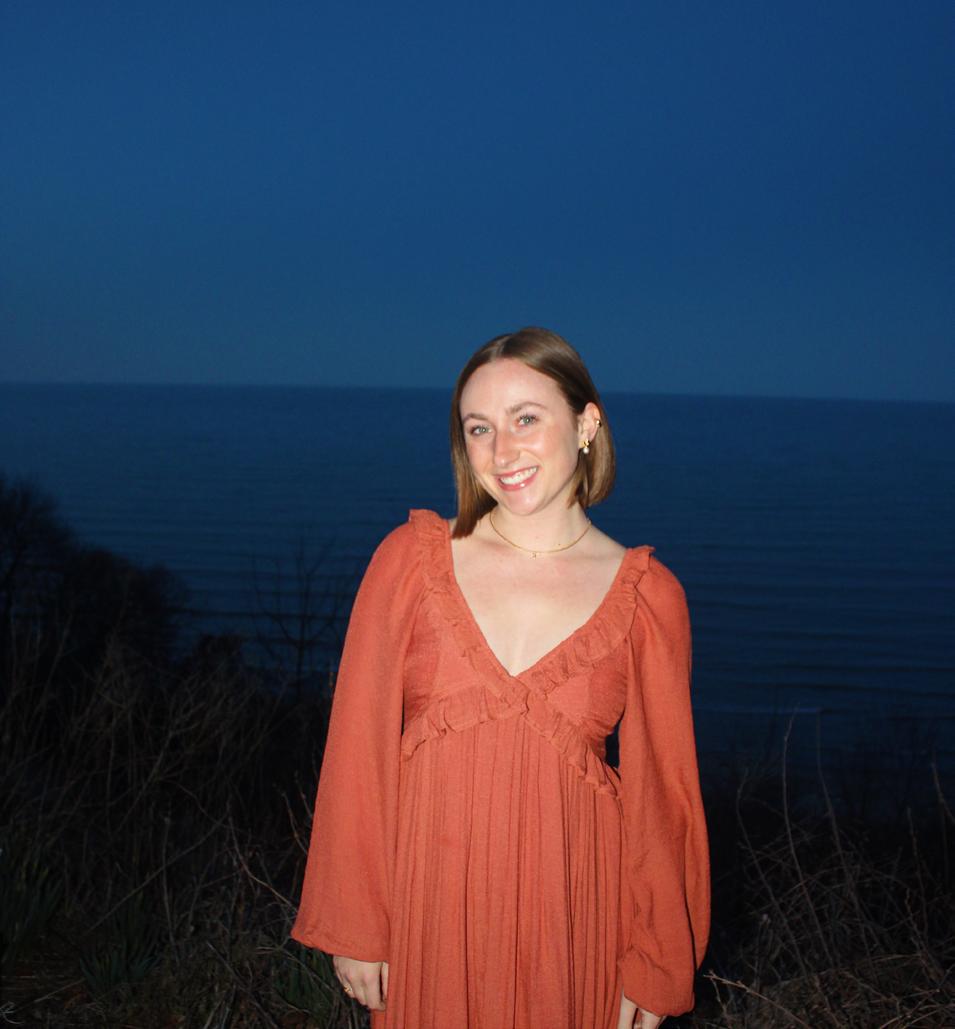
What I always lacked with my conviction to write was an equally strong voice. I had things that I wanted to say, but they were sometimes too real, risky or scary to put on paper. As I have grown up, I have grown braver. I have found a voice that I believe in and a voice that fills rooms I was once afraid to stand in or ones I feared that I did not belong in. It seemed only fitting that my final endeavor at the Marquette Wire would be to create a magazine that had that same voice. “Playing with fire” is very much a doubleedged sword of a concept. In one direction, it can cause chaos, anguish, violence, hurt. In the other, it can be just enough to evoke change, invite conversation, take steps towards a brighter future, set new precedents and create new tides. It can reveal a very beautiful thing burning beneath a
In this Journal, you will see two photo series, “Up in Flames” and “When The Smoke Clears,” one representing chaos and the other clarity. These were created with the intention of representing the theme through visual storytelling. And the stories, well, they will explain themselves.
I want to take a moment to thank my magical friends and family who are responsible for shaping me into the person I am and helping me find the voice I now possess. I want to thank my peers and mentors who have paved the way for me to grow as a writer and who have loved me through that journey. I would also be remiss not to mention and thank Gail Collins – the subject of my story and a large source of inspiration for this entire Journal. I will never forget the moment a nineteen-year-old Grace sat and watched a call from New York, New York come in while I sat in my dorm room and found the courage to pick up. Thank you for sharing your stories and for giving me confidence, even if you didn’t know it then. Finally, thank you to all of the contributors of this project – I have no doubt that you will each set the world on fire in your own way.
With so much love,
Grace Elizabeth Cady
EXECUTIVE DIRECTOR - Hope Moses
DIRECTOR OF STUDENT MEDIA - Patrick R. Johnson
MANAGING EDITIOR OF THE MARQUETTE JOURNALGrace Cady
DESIGN CHIEF - Erin Schneider
EDITIORIAL
EDITOR OF DIVERSITY & INCLUSION- Phoebe Goebel
EXECUTIVE EDITORS
Sophia Tiedge, Julia Abuzzahab, Sophie Goldstein, Izzy Fonfara Drewel, Jack Albright
ASSISTANT EDITORS
Trinity Zapotocky, Sophía Cortés, Kaylynn Wright, Sophia Woods
CONTRIBUTING REPORTERS
Lauren Puthoff, Mimi Sinotte, Joseph Schamber, Clara Lebrón, Conor McPherson, Ellie Golko, Dakota Barnes-Rush, Ben Hanson
COPY CHIEF- Emma Fishback
COPY EDITORS
Briana Nelson, Erin Howard, Kara McCoy
DIGITAL
CO-MANAGERS OF MARQUETTE UNIVERSITY TELEVISIONKristin Parisi, Patrick Curran
EXECUTIVE PRODUCER - Richie Lyons
ASSISTANT PRODUCERS
Tate Kramer, Katherine Loren, Lunden Davis, Adrian Fraga, Gabriel Sisarica
GENERAL MANAGER OF MARQUETTE UNIVERSITY RADIOSam Baughn
RADIO/AUDIO TEAM
Clare Lindstrom, Connor Baldwin, RJ Siano, Tom Oeffling, Pat Swanson, Trevor Hilson, Angelina Galullo
CREATIVE DESIGNERS
Kendal Bell, Serena Pace, Murphy Lealos
PHOTOGRAPHY CHIEF- Keifer Russell
PHOTOGRAPHERS
Katie Craig, Forster Goodrich, Shannyn Donohue, Jack Belmont
7 THE MARQUETTE JOURNAL April 2024 6
Cards on the Table
“Sometimes the easiest way to evoke change or create progress in the world, your interpersonal relationships or within yourself is to lay everything out or to put your cards on the table. Showing your hand is a sign of strength, not weakness.”
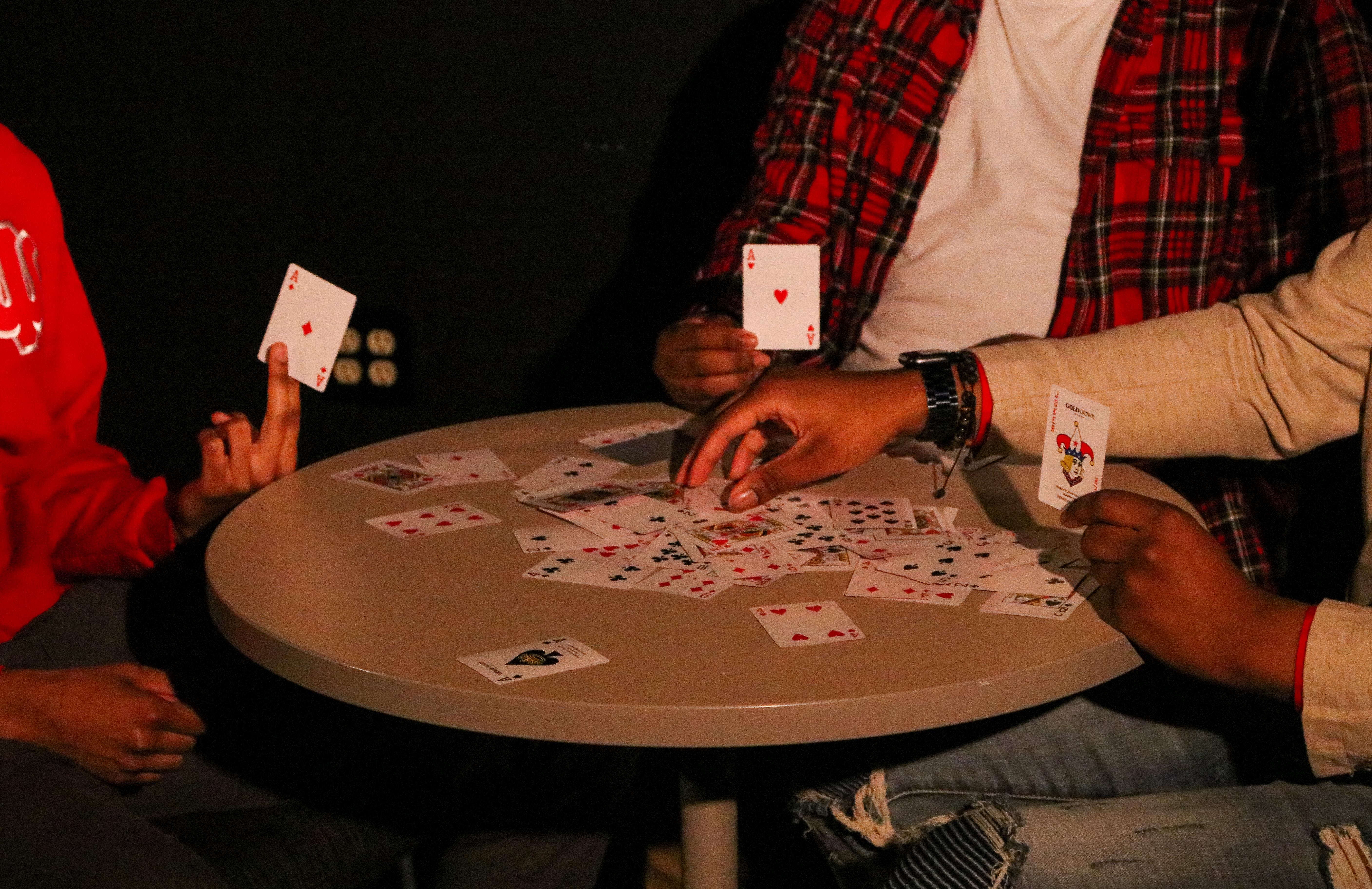

8 April 2024 THE MARQUETTE JOURNAL 9
UP IN FLAMES
Photo By Jack Belmont, featuring models from Vogue at MU
BURNING UP
Written By Trinity Zapotocky
Five years.
That number is displayed across cities like New York, Seoul and Glasgow for everyone to see the estimated time left before climate change impacts human society in a severe way.
“It seems to me that we are living in a time that many people have called ‘post normal,’ which essentially means that the world of the future is not going to look like the world of our childhoods,” Gerry Canavan, English professor and ecological humanities expert at Marquette University, said. Canavan teaches an environmental protection class, where they learned from an article that Milwaukee will be a hot spot for the future, due to having the Great Lakes and surrounding farmland. He said the article tells Milwaukee to build homes for those who will be moving in the future as other areas become uninhabitable.
Canavan said the idea of the planet warming is a hard pill to swallow because even if we do achieve the ambitious goals of decarbonization, we will still be stuck in a world that will be much hotter and less habitable to civilization. Despite this, he said the first attempt should be a global
political economic shift toward carbon neutrality and decarbonization.
Decarbonization is the process of reducing climate temperature and carbon dioxide and greenhouse gas emissions. In order for decarbonization to occur, there needs to be a significant reduction in the release of greenhouse gas emissions and carbon dioxide. Decarbonization is an attempt to mitigate the global temperature increase.
Heather Kohls, former Marquette environmental economist, said it’s important to remember it has only been 40 years since climate change has been even discussed.
“Gen X was the first group of kids that actually even had anybody mention that fact that you were supposed to be good to the environment unless you were a girl or boy scout,” Kohls said. “It’s becoming harder and harder for people to ignore climate change. That’s the first step: to believe there’s a problem. Then you have to have it hit you personally. And those two things coming together have people make change.”
Canavan said individual action won’t be as successful as society coming together to lessen the severity for
upcoming generations.
“The problem with climate change is that the effects are baked in from decades before any of the alive generations, so the efforts to decarbonize are following the idea of minimizing future damage rather than reversing history,” Canavan said. As far as action goes, Canavan said we can make different kinds of consumption choices, but the root of climate change is a structural problem.
“I’m kind of stuck with living a certain type of lifestyle because that’s the way we built the roads and things of that nature, so we really need to be thinking more systematically and that’s the problem,” Canavan said.
Canavan said the future is looking bleak and unstable if the government doesn’t change it’s spending habits. He said what society values, like modern technology, transportation and modern energy systems, is what people invest their money in.
“If you look at what our government values, we seem to value armies and prisons, and not valuing climate change. To me, the answer is to start spending money looking into the situation, trying to build
sustainable energy systems, build sustainable transportation systems, do the research to try and figure out what is actually possible to change,” Caravan said.
According to the U.S Treasury, the government spends around 13% on the Department of Defense, which is military programs. This translates to $344 billion.
Kohls said to get people to care about protecting the environment, you need environmental change that impacts people’s checkbooks.
“One of my favorite analogies is when they first invented the tractor in 1907, farmers protested and made this whole thing about how it was going to destroy farming as we know it,” Kohls said. “They were just abusing the technology, and then we learned that it finally hit people to a point where farming prices are now skyrocketing cause farmers are leaving.”
Kohls said businesses can be a huge factor in mitigating environmental effects, such as businesses using money to buy carbon from the atmosphere. She said building demand is the fastest way to build supply, and that this mindset transfers
into caring about the environment. Essentially, she said the power of the people is important in driving demand for environmental change and getting businesses to care.
“The danger of counting on you and I to do the change is that there’s always going to be people who aren’t reliable in the individual aspect,” Kohls said. “You and I as individuals are more powerful as investors demanding that the companies that we buy from or invest in do the right thing because that’s where the money is.”
Kohls said moving forward finding ways the average individual can contribute without hurting their financials is ideal.
“Climate change is the same kind of behavioral patterns that we have to learn to implement ourselves. It’s thinking about the garbage you make, about what you recycle. It’s thinking about what companies you invest in,” Kohls said. “If we can get our businesses to work together to find solutions to things, that would be the best scenario ever.”
For the planet’s future, Kohls said it depends on what technologies get invented and how businesses work with consumers.
“There is so much stuff out there that has huge potential, but nobody’s actually invested in it because there isn’t a demand for it. Years ago, they had these dryer balls that would actually make your clothes absorb the carbon dioxide you expel when you breathe,” Kohls said.
Kohls said driving demand for these types of environmentally sustainable products is a crucial puzzle piece.
A step in the right direction is that COP28, the oil and gas decarbonization charter, has an agreement to zero out methane emissions by 2030. 50 companies, including 30 nationally owned oil and gas companies, have signed up.
Kohls said if executed, these kinds of agreements driven by the private sector and by companies doing the right thing, are what can really put up a fight against climate change.
For those who are in denial of the results of climate change and the seriousness, Canavan points to some current events, such as Canada being on fire for months or the temperature being above 60 degrees in February. The clock is ticking.
10 11 April 2024 THE MARQUETTE JOURNAL
f
She is known to many as Dr. Anne Hanneken ‘78, vitreoretinal surgeon and associate professor of Molecular and Experimental Medicine at The Scripps Research Institute whose work has been celebrated in notable publications such as The Wall Street Journal.
But before she was an exceptional doctor whose research led her on a six-year quest to bring ‘dead eyes back to life,’ she was just a young girl from Milwaukee’s Northside with a love for tennis.
MAKING SPACE
Written By Hope Moses Photos By Keifer Russell
Her passion, which started in the 8th grade, would later positively impact the lives of those she had never met.
In the neighborhood where she grew up, there was a public tennis club that exposed her to people from all walks of life.
“I met players of all ages, all nationalities, all walks of life. We socialized and played tennis all day and into the night. College players, high school players, young and old, every walk of life… I remember hitting for hours on the backboard at these local courts and playing pickup games with everyone,” she wrote.
She remembered prominent players would often stop by and play alongside community members, including a Davis Cup winner. The Davis Cup is awarded to the winner of an annual international lawn tennis tournament.
“Lots of great players would come by, including an older player who was a former Davis Cup player from Czechoslovakia. People would all stop playing to watch him practice. Every once in a while, he would practice with me and give me advice. Those were special moments,” she wrote.
Her brother, Dave Hanneken, a professor in the College of Communication, said he remembered the dedication she had when it came to tennis. Alongside their two other siblings, Dave Hanneken would shovel snow off tennis courts so that she could practice.
“What’s funny about my sister was snow didn’t stop her. She would recruit my brother, sister and I and we would walk four blocks to Wick Field…She recruited us to shovel the area where she could hit it against the backboard… and we always went” Dave Hanneken said.
A Short History of Title IX and its influence on women’s sports
On June 23, 1972, President Richard Nixon signed into law the Title IX of the Education Amendments of 1972. This law was not only groundbreaking but transformative for girls and women in the United States. This law prohibits discrimination based on sex in any educational program or activity receiving any type of federal financial aid.
Before this, The Civil Rights Act of 1964 was signed into law by President Lyndon Johnson on July 2, 1964. This law prohibits discrimination on the basis of race, color, religion, sex or national origin. Originally, the legislation did not include the mention of discrimination based on sex, but, women continued the fight for equal rights.
One of those women was U.S. Representative Patsy T. Mink of Hawaii who co-authored, sponsored and introduced the law to Congress. Following her death, Title IX was renamed the Patsy Takemoto Mink Equal Opportunity in Education Act.
Because athletics were considered educational programming and activities, Title IX opened the door for women in sports in ways that were not accessible before. The impact of Title IX includes scholarships allocated to women athletes, equal treatment of teams and equal participation.
Although the legislation was signed into law two years before Dr. Anne Hanneken entered college, in 1974, Marquette did not yet have a women’s team. This didn’t stop her.
Upon her arrival to Marquette in
1974 where she studied chemistry, she tried out for the men’s tennis team. After a few competitive matches against the players on the team, she was accepted as the 9th player out of 12. She played singles and doubles.
“I remember that the quality of tennis was great on the men’s team, and much better than any of the tennis that I played in the past. We had an assistant coach named Rick Vetter who was a top regional player and a pro at a local tennis club. He raised the caliber of everyone’s game and pushed us in practice,” she wrote.
Although there was a continuous movement for women’s equity in sports across the nation, at the time, this was not her primary focus.
“I was just thrilled to be playing tennis and that was the extent of it. I really wanted to play college tennis,” she wrote.
“You have to realize that we all played together at the local courts, young and old, men and women. There was no discrimination based on age, sex, or ability in our club.”
Dr. Anne Hanneken
12 13 April 2024 THE MARQUETTE JOURNAL
k

Dr. Anne Hanneken credits this to her days at the public tennis club in her neighborhood.
“You have to realize that we all played together at the local courts, young and old, men and women. There was no discrimination based on age, sex or ability in our club. I never experienced any resistance playing in tennis matches at the local courts where men and women would team up on a regular basis. It was natural for me to play with people of all ages, men or women, it didn’t matter,” she wrote. She saw playing tennis with men as a thrilling obstacle. “The men’s games were faster and more of a challenge. I liked the greater challenge and it raised the quality of my game. That was my tennis experience and I took that mindset with me to college,” she wrote.
Hope on the Horizon
After playing on the men’s tennis team for one season, Anne spoke often about a women’s tennis program at Marquette.
“I spoke to Chas Mulcahy often about the possibility of building a women’s team and he kept encouraging me that a women’s team would be created. Someone asked me to outline a program, recommend a coach and give them suggestions for my vision of the program so I made recommendations for a coach,” she wrote. “I don’t remember much more about the plans
1975 when we launched the First Annual Milwaukee Tennis Classic with Athletic Director Al McGuire as a national intercollegiate men’s and women’s tennis tournament. Women’s tennis achieved equality with the MTC,” Mulchay wrote.
In 2009, Marquette women’s tennis players Christina Ruiz and Rachel Hush won the National MTC women’s doubles championship. Seven years later, Marquette women’s tennis players Diana Tokar and Paula Tormos Sanchez took home the women’s doubles trophy in 2016.
that I drafted but I heard there was movement in the athletic department to start a program.”
Chas Mulchay ‘59 played on the Marquette men’s tennis team from 1956-’59. He believed Hanneken was the future of women’s tennis at Marquette.
“Anne was a tremendous, dedicated, talented and competitive athlete. She started Marquette women’s tennis before there was a team…She won matches and in the process became a legendary presence initiating women’s tennis when Marquette started its women’s program the following year –1975,” Mulchay wrote.
To Mulchay, Dr. Anne Hanneken played a key role in launching the Marquette women’s tennis program which went on to win multiple conference championships and successfully compete in the NCAA women’s tennis championships.
With a blessing from the thenathletic director of Marquette, Al McGuire, Mulchay, alongside George Gasper ‘58 and John Roethle, the Milwaukee Tennis Classic was born. Its creation cemented a commitment Mulchay made to Dr. Anne Hanneken.
“I remember encouraging Anne at that time and promising her that would do everything we could to promote the women’s tennis program. We fulfilled that commitment to Anne in
President and Director of Athletics Bill Scholl said to the Marquette Wire last year. “Unfortunately, the budget realities forced us to make some moves and those are some of the moves we made.”
Discussing Dr. Anne Hanneken’s achievements and indirect impact sparked a new thought for Dave Hanneken.
“…As I think back at it now, I’m even more impressed. Because in today’s world, it doesn’t seem like that would be all that much of a radical step to say ‘hey, I want a shot here and I’m going to go up for the guy’s team.’ Right? But when you really think about it and put yourself in that 1970s world, I think that was one of the boldest things I can ever imagine somebody doing,” Dave Hanneken said.
Challenges and triumphs for Marquette women’s tennis
Former men’s tennis player, Ross Sprovieri and his wife Susan donated $1 million gift to establish endowed tennis scholarships for Marquette’s NCAA men’s and women’s tennis programs in November 2023. This is the largest-ever gift awarded to the university’s tennis program.
Two months later, a scholarship change in the program was announced.
In January 2023, it was announced that Marquette men’s and women’s tennis and men’s and women’s track & field would be taken down to non-scholarship programs by the 2025-2026 academic year. This decision was made following budget cuts made within Marquette Athletics.
“We’re in year three of a multiyear process,” Marquette Vice
Although this decision does not impact Dr. Anne Hanneken and other tennis alumni directly, Mulchay still reflects on “I feel bad for Anne and all Marquette women’s tennis alumni as Marquette Athletics moves ahead with also downgrading women’s and men’s track & field and cross country scholarships. Non-revenue sports have been severely damaged by Marquette Athletics. It will be difficult to restore those sports but a new administration hopefully will accomplish that objective,” Mulchay wrote.
Outside of scholarships, senior women’s tennis player Sarah Badawi said women’s tennis is facing other challenges, including attendance.
“I think one of the most important factors that are challenges women are facing is the amount of people and crowds that come to their matches versus how many more people care about men’s matches and men’s
tennis. And this can happen to like the collegiate level or at the professional level,” Badawi said. Badawi’s teammate, junior women’s tennis player Tiera Jarmond concurred with Badawi’s sentiments.
“That’s definitely true. We see it every weekend at home matches…I’m sure that a lot of other women’s sports that have a men’s sport counterpart feel that way – that on the surface level – there so much more care for the men’s side of the sport, even though we are putting in the same amount of work and effort,” Jarmond said.
As Marquette’s men’s and women’s tennis programs prepare for a major shift over the next year, Badawi is not only looking to the future but is grateful for what the team is today.
“This year is one of the first years we’ve been close to the men’s team. In previous years, we didn’t see that kind of support within each other…Marquette tennis is everything to me, and I’ve had a great experience here with the coaches and with the girls,” Badawi said. Jarmond was also grateful
– not only for the team — but for Dr. Anne Hanneken’s tennis legacy, too.
“Without her joining the team and finding that spot, who knows – we probably wouldn’t have a chance to be here. So you can open a door for yourself that will open doors for 10s of hundreds of others,” Jarmond said.
As for Dr. Anne Hanneken herself, she hopes women’s tennis players at Marquette continue to enjoy themselves –despite the obstacles faced by current and future players.
“I cherished my time on the team and hope women continue to enjoy the opportunities that I cherished when I was in college. Competition at a high level is an enriching experience for devoted players, for it teaches resiliency, fortitude and strength, so many valuable skills that help shape someone’s future,” Dr. Anne Hanneken said.
So, this young girl from Milwaukee – who always had her eye on a goal – became a prominent, well-respected vitreoretinal surgeon and left behind a legacy of making space for others at Marquette.

14 15 April 2024 THE MARQUETTE JOURNAL

after the four women were selected, they got to work creating their stock pitch.
FRACTURING
Written By Sophia Tiedge
STIGMAS
The University of William & Mary holds a Women’s Stock Pitch competition annually with students from top universities around the world such as the University of Oxford and Cornell. This year, Marquette’s Accelerated Ingenuity in Markets program is sending four senior women to compete.
Although AIM sends teams to stock pitch competitions each year, this is the first time an all-women team is competing. The team hopes that younger women in AIM will see what they’re doing and how it’s something they themselves can achieve.
AIM, established in 2004, gives Marquette students an opportunity to gain hands-on experience that simulates Wall Street jobs. They regularly value and pitch stocks as assignments, but at this competition, they’re presenting their findings to not just their Marquette peers.
Catherine Taphorn, Kelsey Koch, Ella Coulter and Melissa McMahon, all seniors in the College of Business Administration, based their stock pitch on a company called Hologic, which manufactures medical materials, and more specifically, materials for
women’s health.
“They’re kind of champions of getting women tested for things that they’re not really tested for enough, like breast cancer and cervical cancer,” McMahon said.
Hologic does global work to promote women health. They manufacture screening devices and testing kits. A Hologic news article shared how the company leads the way on these kind of endeavors: “Hologic is a leading innovator in women’s health with a commitment to advancing cervical and breast cancer screening technologies, from the first liquidbased cytology test to the first 3D mammography system and now the first FDA-cleared digital cytology platform,” said Jennifer Schneiders, Ph.D., Division President, Diagnostic Solutions at Hologic. “Our technologies have had a tremendous impact on decreasing cancer rates in women, and we are incredibly excited by the promise of Genius Digital Diagnostics. The system delivers more actionable and accurate insights for laboratories and healthcare professionals to enhance patient care.”
Taphorn said she found the competition through someone she knew at William & Mary and brought it to the AIM director Dr. John Wall. Each AIM member interested in going to the competition applied, and
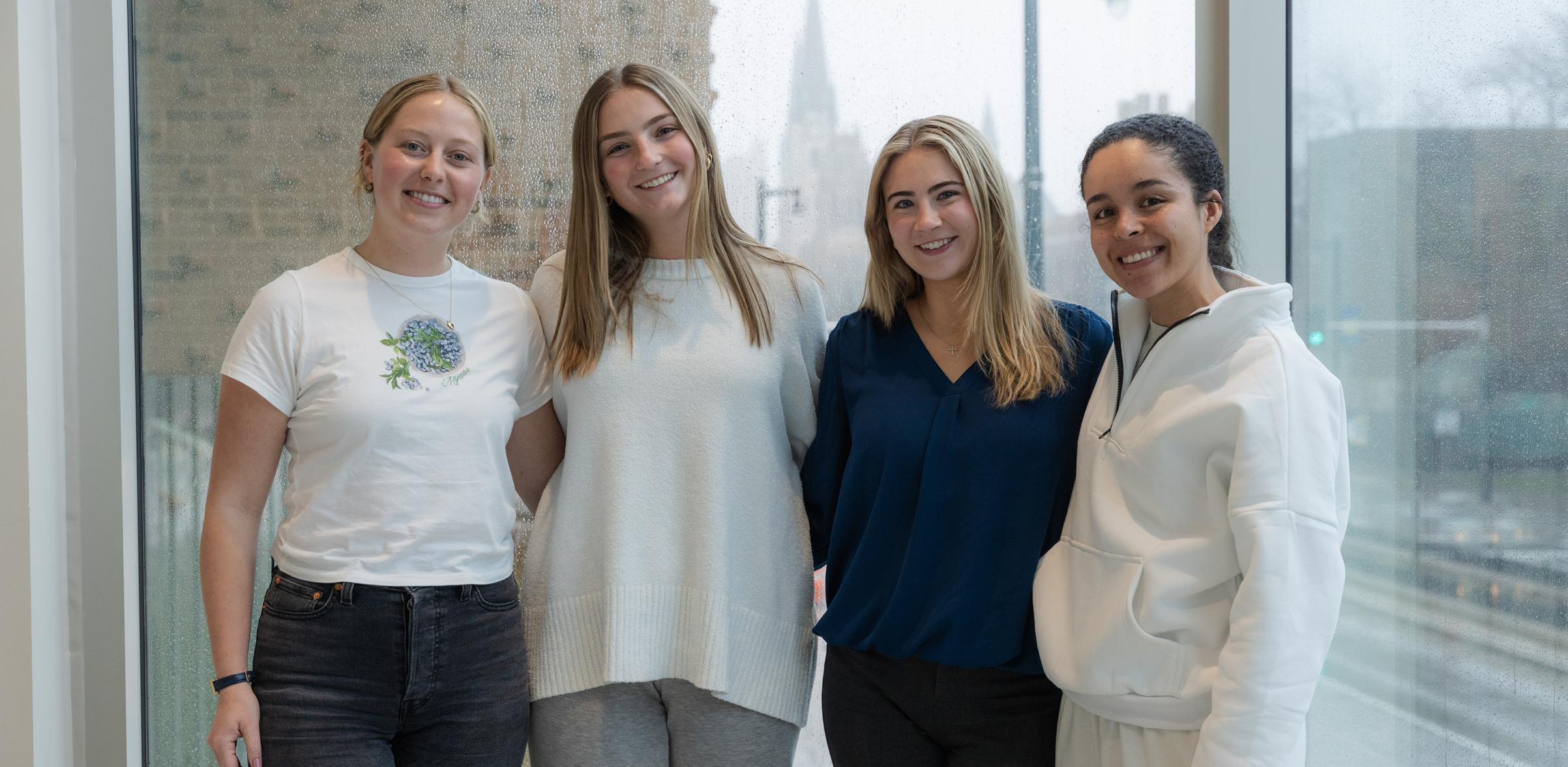
“We looked into the company and found a few drivers as to why their stock price is going to be higher in the future. So, we picked two things that are happening right now as to why people should be investing in them,” Koch said.
McMahon said they started by performing proprietary research, then moved into interviewing professionals from the company they chose. Then they applied these findings to their analysis of the organization and at the stock pitch competition, they presented their findings on April 5 and 6.
“We’re taking an educated guess based on what we learn in class and what we’ve learned from our research,” Taphorn said. “We’re essentially predicting what’s going to happen to this company over the next five to 10 years and then formulating an argument as to why someone would choose to invest in this stock today.”
Coulter said in AIM they have to follow strict rubrics and pressure for deadlines and grades, but she’s found that this project is something so much different.
“We have like a rubric for this, but it’s a lot looser and we have a lot more freedom to bring something together that we want and that we’re proud of versus just for our AIM class,” Coulter said. “I think that’s another aspect of it that is really cool. It’s not a grade driving us to do it, It’s just like our own work and creativity.”
Taphorn said aside from the fact that it’s an allwomen’s competition group, being in these spaces is bringing AIM in a good direction.
“I also think it’s really important for Marquette to be seen like in these spaces with the typical target schools. We’re already doing a really great job getting on the map with these top companies and top investment firms,” Taphorn said.
The demand for women in business is high and diversity is sought after.
“Diversity—from gender diversity to culture, age, and race—has been shown to foster creativity and innovation. From PricewaterhouseCooper, to Disney and L’Oreal, organizations across industries are seeking to prioritize and benefit from a diverse and inclusive work environment,” Katie Reynolds wrote for the Hult International Business School.
“I just like the idea of seeing a team like this, and then eventually being like ‘this isn’t anything special.”
Kelsey Koch
Koch said she hopes being an all–women team can have a positive impact on the future of women in business.
“Watching other people do something like that would give me the confidence to kind of be like ‘oh, okay, maybe I can do this.’ There’s been so many men’s teams and that’s not necessarily weird because that’s the industry. I just like the idea of seeing a team like this, and then eventually being like ‘this isn’t anything special,’” Koch said.
Currently, only 26% of finance professionals in the U.S. are women. Koch said she hopes having women in business becomes normalized, and stories won’t need to be written about them anymore.
“I’ve seen this both with this competition and the other competition’s I did. Just seeing younger students in the program getting really excited about these opportunities now and we’re bringing them to light,” Coulter said. “We’re going to be able to share our experience and set that precedent for new opportunities for our program.”
“Men and women will inevitably have different experiences and backgrounds, which shape their approach to business. Challenging each other and collaborating with people who think differently can breed creativity and promote the innovative ideas that push organizations forward.”
Koch said her favorite part of this process has been making breakthroughs in their research. She said these moments make the hard parts worth it.
“One of my favorite parts is when we’re in the AIM room and it’s three of us huddled around a computer and we finally figure something out and we’re so excited,” Koch said.
Taphorn said this year’s Sophomore class has significantly more women than past years, and she hopes that if this competition goes well, it will gain popularity among the younger classes.
“We want to do well because we care and we want to represent Marquette,” Taphorn said.

A supplemental news segment was produced by Tate Kramer as a project of Marquette Television. Visit https://marquettewire.org/
photo By Keifer Russell
THE MARQUETTE JOURNAL 17 r


Evil Once Lived Here
“The Ambassador Hotel exists in infamy, just a few blocks out of reach of Marquette’s main campus. The hotel remains iconic in the worst way as it once housed American serial killer Jeffrey Dahmer. We express sympathies and remembrance to Steven Tuomi – Dahmer’s first murder victim in Milwaukee who was killed in the hotel.”
19 THE MARQUETTE JOURNAL 18 April 2024
UP IN FLAMES
Photo By Katie Craig
T R
E A
WMhether or not you believe that human activity is the leading cause of climate change, there is unequivocal evidence that the world and its oceans are warming. The oceans are already almost a full degree warmer than they were in 1970.
Fishing, more specifically lobster fishing, has a rich history that dates back to Native American tribes in Maine, like the Abenaki and Passamaquoddy, using sticks and nets to catch and eat lobster. Lobstering existed in the United States before it was a country and has remained highly important to many communities in Maine.
Unsustainable fishing is a tale as old as time, and the lobster industry has remained sustainable due to a collective effort to enforce their regulations.
After the whaling industry almost completely decimated whale populations, lobstering became a highly regulated industry to protect the lobster and the future generations of lobstermen. Similar to how lobstermen preserve their lifestyles by uniting together, we can all do the same to strengthen our climate and preserve it for future generations.
The Gulf of Maine is a lobster hotbed formed by the arm-shaped peninsula of Cape Cod and the Canadian Province of Nova Scotia. The waters south of Cape Cod used to be filled with lobster pots but warming waters have ended the once-popular lobster fisheries. The Gulf of Maine is following the same trend as it has experienced unprecedented increases in water temperature in the last 15 years.
The Gulf of Maine is currently warming faster than 99% of the ocean. The warm Gulf Stream coming up from the equator and the cool Labrador Current meet in the Gulf of Maine. They act as veins pumping water into the gulf to keep it abundant with marine life.
Unfortunately, the Gulf of Maine being cornered by Cape Cod and Nova Scotia results in the water being stuck in a shallower gulf that makes it more susceptible to change and leads to warmer water temperatures.
 Written By Connor McPherson
Photo By Katie Craig
Written By Connor McPherson
Photo By Katie Craig
“My family has been fishing here for decades, if the lobster leave, the whole industry might go with it,” Foye said.
With the lobster industry bringing in over $1 billion to the Maine economy, change needs to happen.
Although Milwaukee has no lobster fisheries, commercial fishing used to be a flourishing industry on Lake Michigan. Through overfishing, human pollution and warming waters, the fish populations have been depleted and commercial fishing has been nearly eradicated. Climate change is affecting everyone, everywhere.
The Great Lakes Fishery was estimated to be worth over $7 billion dollars and lake whitefish used to be a staple for fisheries on the lake. In 1993, 8.34 million whitefish were harvested in Lake Michigan, this number was reduced down to just 2.64 million in 2019 and continues to trend down. Overfishing and warming waters are driving the fish away and not even allowing them to grow and increase their population.
Every lobsterman knows they can’t keep any undersized, oversized or egg-bearing lobsters. Without any external supervision, the lobstermen still know that these regulations are there to protect them, even if it involves throwing back their own catch. These measures keep the industry sustainable.
Individual lobstermen might find it useless to do these practices but when you multiply it across every boat and every day, it adds up. It is up to the individual, to solve this problem. One person littering or idling their car to keep it warm in the winter might not have an impact on the climate, but it might when you stretch it out to millions of people.
Thousands of jobs are currently threatened in the lobster industry and families are at risk of losing their main source of income while the worst is still yet to come. If lobstermen can work together to make change, so can everyone else.
Lobster populations are beginning to flee north from their never-ending heatwave in the gulf. As their populations begin to dwindle, Maine lobstermen can already feel the change.
My friend Zac Foye and I are some of the over 5,000 Maine lobstermen who currently face this quandary. Zac has been lobstering since he was eight and he lobsters in the same town that his father, grandfather and great-grandfather did before him.
The way lobstermen treat their industry is a bellwether to the way we can combat climate change. A community banding together to make change happen might be the only way to reverse the problem. Being reactive is not enough as the effects of climate change are already altering the world.
No matter how simple the fix is, proactivity is key. Either through legislation or just a collective effort, changes can be made in everyone’s lifestyles to attempt to slow irreversible damage.
VOTING WITH VOICE
F
or some, the notion that “every vote counts” is a rallying cry.
It is a statement that seems to encompass the totality of America’s democratic and free political systems. However, for others, this phrase offers nothing more than an insight into the serious branding issue behind voting in the United States.
Although an ever-present facet of American democracy and society, voting has seemed to take a backseat. While it is still an essential aspect of our political freedom, it is one that seems to be less trusted and sought out with every election.
This is particularly visible within younger demographics. An 11-point increase in voters between the ages of 18-29 was observed in 2020. This marked the highest youth vote count in nearly four decades. This is not surprising as youth turnout percentages tend to stick firmly between the low 40s and mid 50s, but it does also explain why voting seems useless to many young people. Voting is a habit.
Older people have been voting for decades. Between this fact and the sheer amount of people aged 60 and up, there is usually going to be a higher percentage of older voters.
It also does not undermine the effect that the youth vote has already had on policy and elections. Especially since programs such as Stacey Abram’s Fair Fight dedicate themselves to informing and preparing young people of color to vote and exercise their civil rights.
Although Abram’s and her organization have been a major force in reinvigorating America’s relationship with voting, it is also not a sufficiently staffed or funded effort. Major layoffs are currently affecting the group due to a lack of funds caused by mounting legal fees. A former powerhouse in fundraising for the Democratic Party, the company now shows the importance of individual actions when looking to change policy.
Written By Clara Lebron
In Wisconsin, the youth vote has made a serious impact on the political environment. There was an increase in youth turnout in 2022 that led to the re-election of Democratic Governor Tony Evers. Teddy Landis, a student at the University of Wisconsin-Madison, was one of many that helped organize and motivate young eligibles to go out and perform their most powerful civic duty. His efforts would, in part, lead to Judge Janet Protasiewicz being elected to the bench in 2023.
Posting on social media can get your point across regarding what you believe, but it also only communicates your viewpoint. This can also be done more directly through voting. Many in Wisconsin are opting to vote “uninstructed” in this year’s Democratic Primaries, hoping to send a very clear message to current administration.
Voting uninstructed means that a person wants to be present within a political party, but does not want to vote for any of the candidates on the ballot. Although there is a multitude of reasons a voter might be inclined to vote this way, most who are choosing to do so this election have expressed a need to show their distaste with the United State’s handling of the crisis in Gaza. 8% of voters in the Democratic primary chose this delegation.
As young people, there are a lot of ways that we can inspire change in those around us. Voting, however, is the only way in which we can guarantee our stances and attitudes are understood and accounted for. It is the basis for every regulation, law, and politician that create the world that we live in.
If we throw away the opportunity to perform this civic duty, we are also throwing away the opportunity to create the change we really want to see. To prove your point, you’re going to have to put your vote where your mouth is.

21 THE MARQUETTE JOURNAL S W I M
I
M
N G U P S
21
h u
Photo By Keifer Russell
YOU HAVE A PLACE HERE
Written By Joseph Schamber
Photo By Keifer Russell

Wisconsin has a reputation for being one of the drunkest states in the Union and contains the third highest volume of bars per capita, but for Wisconsinites, bars are a lot more than just a place to drink.
They are community hubs reflecting the personalities of the attendants they attract. Saloons, speakeasies and sports bars each have a unique flavor serving the various communities that make up the state.
Wisconsin carries another important legacy as the “Gay Rights State,” as it was the first state to enact a law prohibiting discrimination in employment, housing and other public accommodations based on sexual orientation.
Right here in Milwaukee, these two legacies come to a crossroads at the oldest continuously running gay bar in Wisconsin, This is It! The bar, humorously referred to as “Tits” by regulars, is not only a prominent site for queer nightlife. It has also served as a safe haven for LGBTQ+ Milwaukeeans and a force for progress in the city.
The bar opened in 1968 at 418 E. Wells Street, where it still resides to this day. At the time, gay bars existed but were still uncommon. “Bottoms Up,” a 2012 book highlighting Wisconsin bars, contains an article about This is It! that says the founder, June Brehm, “knew a lot of gay people and wanted to create a comfortable and safe gathering place during a time when gays suffered great discrimination.”
Under Brehm and her son’s management, the bar earned the reputation as a powerful supporter of Milwaukee’s gay community. The bar even held fundraising events for the Cream City foundation and the fight against the AIDS pandemic.
The establishment was a comforting presence for those grieving loved ones lost to AIDS. It also served as a place to heal after the serial killings by Jeffrey Dahmer struck the local queer community.
Over time, This is It! garnered a loyal following of old clientele who had experienced pain of discrimination
before gay and lesbian people in Wisconsin had become legally protected in 1982. However, the bar continues to attract new patrons, many of which are enamored by the lively drag scene it encourages.
The bar later welcomed drag superstar Brian Firkus, better known by the stage name Trixie Mattel, onboard in 2021, as co-owner.
Trixie is a Milwaukee native and came to fame after competing in “Ru Paul’s Drag Race” in 2018. She
“[Bars] are community hubs reflecting the personalities they attract.”
Schamber
recognized This is It! was responsible for kicking off the careers of many fellow drag performers, and wanted to guarantee the establishment survived the COVID-19 pandemic.
The bar has only grown more popular since then and continues its efforts to protect and unify Milwaukee’s queer community. The bar hosts weekly favorites like Thursday Drag Bingo and Friday Drag shows that have, on occasion, featured esteemed queens such as Trixie Mattel herself.
This is It! is much more than a bar, it is a Milwaukee institution with a commitment to improving the lives of queer individuals in the city and across the state.
Cities like Milwaukee need gathering places like these to protect and serve its LGBTQ+ community.
Truly, Wisconsin’s queer culture is celebrated at This is It! and the establishment welcomes all to find a home within its walls.
23 THE MARQUETTE JOURNAL
^
Joseph
Election year is upon us again. As we start getting bombarded with campaign promises, mudslinging videos and voter registration, it’s important to remember that this isn’t just a national level issue.
Lessons in
Liabilities
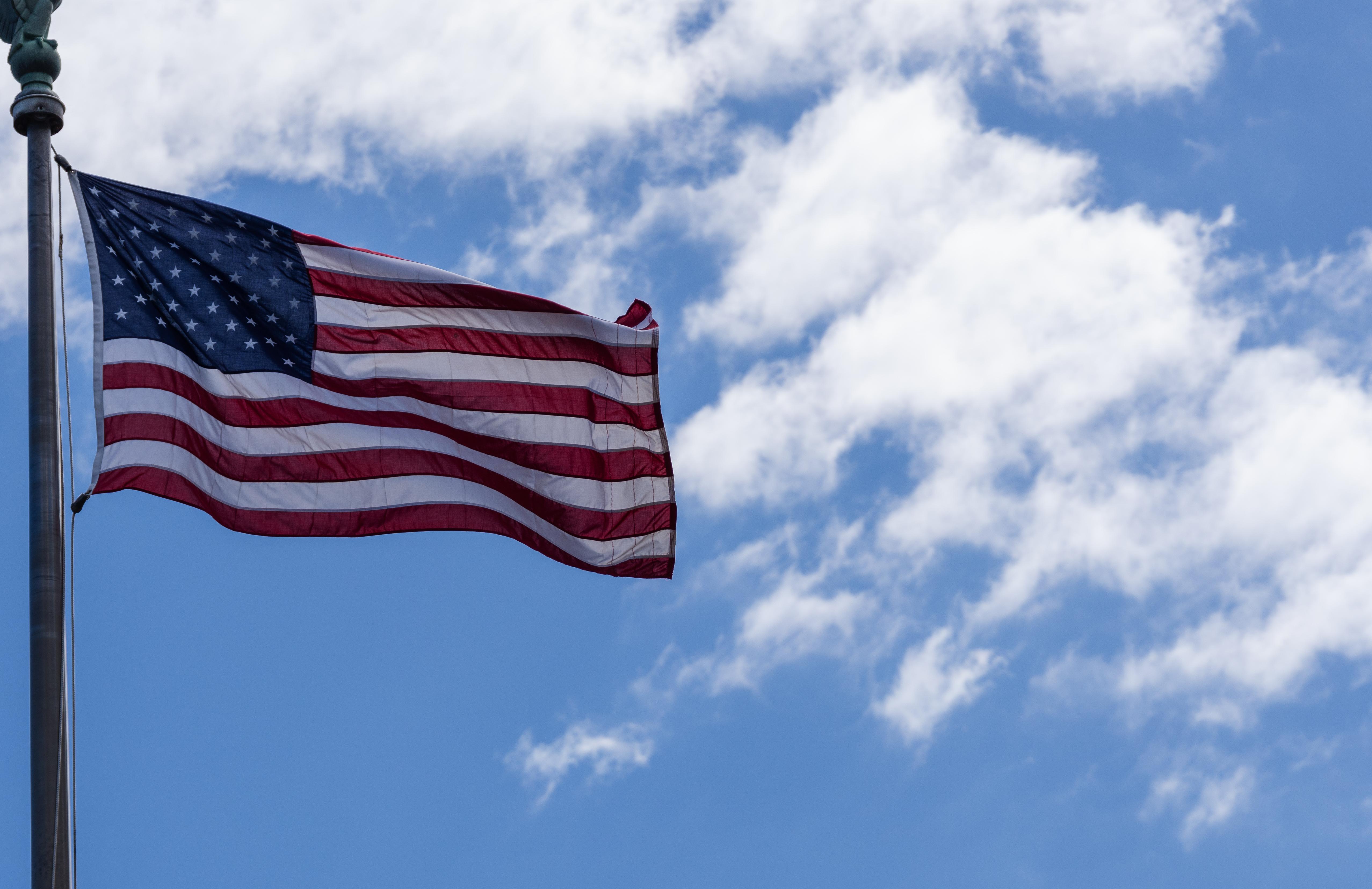 Photo By Keifer Russell
Written By Izzy Fonfara Drewel
Photo By Keifer Russell
Written By Izzy Fonfara Drewel
The presidency isn’t the only office up for election this year. Across the United States, local and state politicians will be running for office, hoping to enact change for their communities. We as Americans need to be more cognizant of the elections happening at the local level.
There is currently record–low voter turnout for local elections. It’s important to understand the implications of this fact.
When you don’t vote, things will not change in a way that benefits you and your community. A majority of active voters are on the older side; young voters, mainly college-age, need to start caring about elections. We are the ones who will live to see the impact of these elections.
We will reap the benefits or inherit the problems of these elected politicians and their policies. We need to start taking a stance and voting for the changes we want to see made by our local politicians.
State and local politics are more likely to impact us at a more rapid and visible level than the efforts of the president. Local governments focus on improving their surrounding communities along with creating laws for the betterment of the cities or states they serve.
The city government is going to be working with the criminal justice system, local school districts and operating within the bounds of city infrastructure. Getting involved with local government will educate you on the environment around you and pushing change can improve your quality of life along with that of others.
It’s also important to get involved with local elections because those smaller forms of government have access to powers that the federal government does not oversee.
While, yes, we all know who the president is, city politicians are going to be the ones we are interacting with the most.
They’ll be running council meetings, attending festivals, walking in parades and making speeches at local events. Learning about their promises and priorities allows you to vote for someone that more closely aligns with your views and can enact those changes.
Local elections include a wide range of positions in the fields of criminal justice, city governance,
education and treasury. Prosecutors and coroners are both jobs decided by local elections. These people can greatly influence how court and criminal trials proceed within your district. This can include setting precedents that will impact people for years to come along with dictating the pace of criminal proceedings throughout their terms.
One of the clearest examples of local election importance can be seen through the decisions of your local school board.
Throughout the entirety of the United States, we are seeing a lot of talk about banning books and censoring the content that children are learning in the classroom. For example, in Menomonee Falls last October the school board brought 33 books to the attention of the superintendent and called for their removal. Among those 33 books were “The Perks of Being a Wallflower” by Stephen Chbosky, “The Kite Runner” by Khaled Hosseini, “Slaughterhouse-Five” by Kurt Vonnegut and “Shine” by Lauren Myracle. School board officials supervise and regulate the curriculums students learn within, and therefore have a lot of sway over what is taught. The district boards hear the concerns of parents and bring those to the attention of the superintendent. They also often hold the power to fire teachers which greatly affects children, the quality of their learning and the routine of their school day.
School boards, city council and judges play an even greater role than we are currently aware of. It’s necessary to vote in elections besides the presidential to ensure the future of our country is moving in a direction you agree with.
Prior to election day, remember to educate yourself on all aspects of voting. Double check that you’ve registered to vote and have all necessary identification with you. You should locate your polling site ahead of time and have blocked out your schedule, so you have enough time to go through the polls.
Lastly, be sure to read about all the candidates and know their campaign promises. It’s also integral to understand what positions they are running for because you need to know that their promises fit into the job and are achievable within their time in office.
Voting is a power given to citizens to encourage change in their state and city. This power only works if you take the initiative to go out and engage in politics. As elections sweep through the country this year, aim to get involved and make your vote count.
q

True Religion UP IN FLAMES
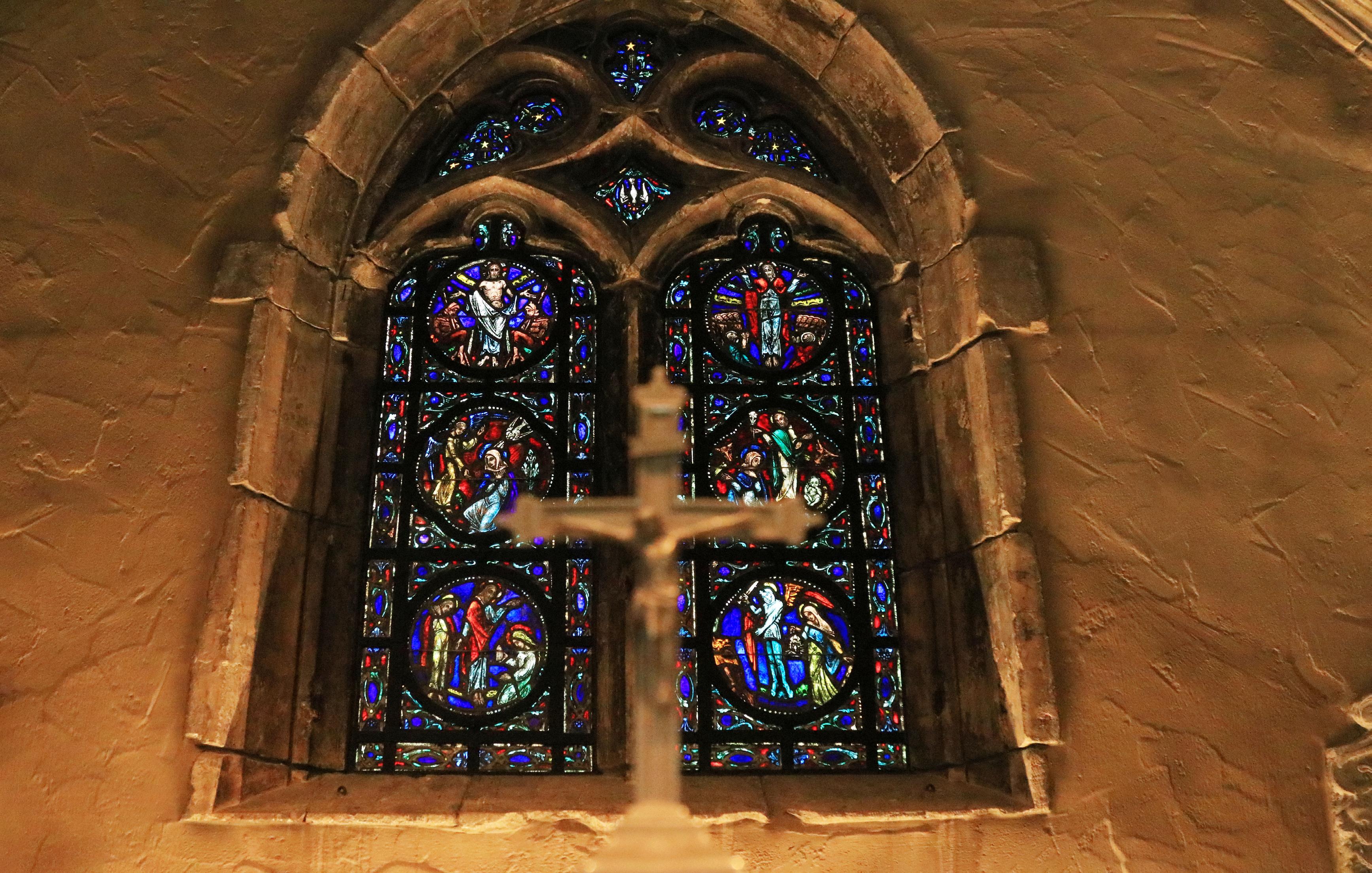
27 THE MARQUETTE JOURNAL 26 April 2024
“Stained glass windows in chapels and ministries act as symbols for the divine light of God.”
Photo By Shannyn Donohue
ahead of her time
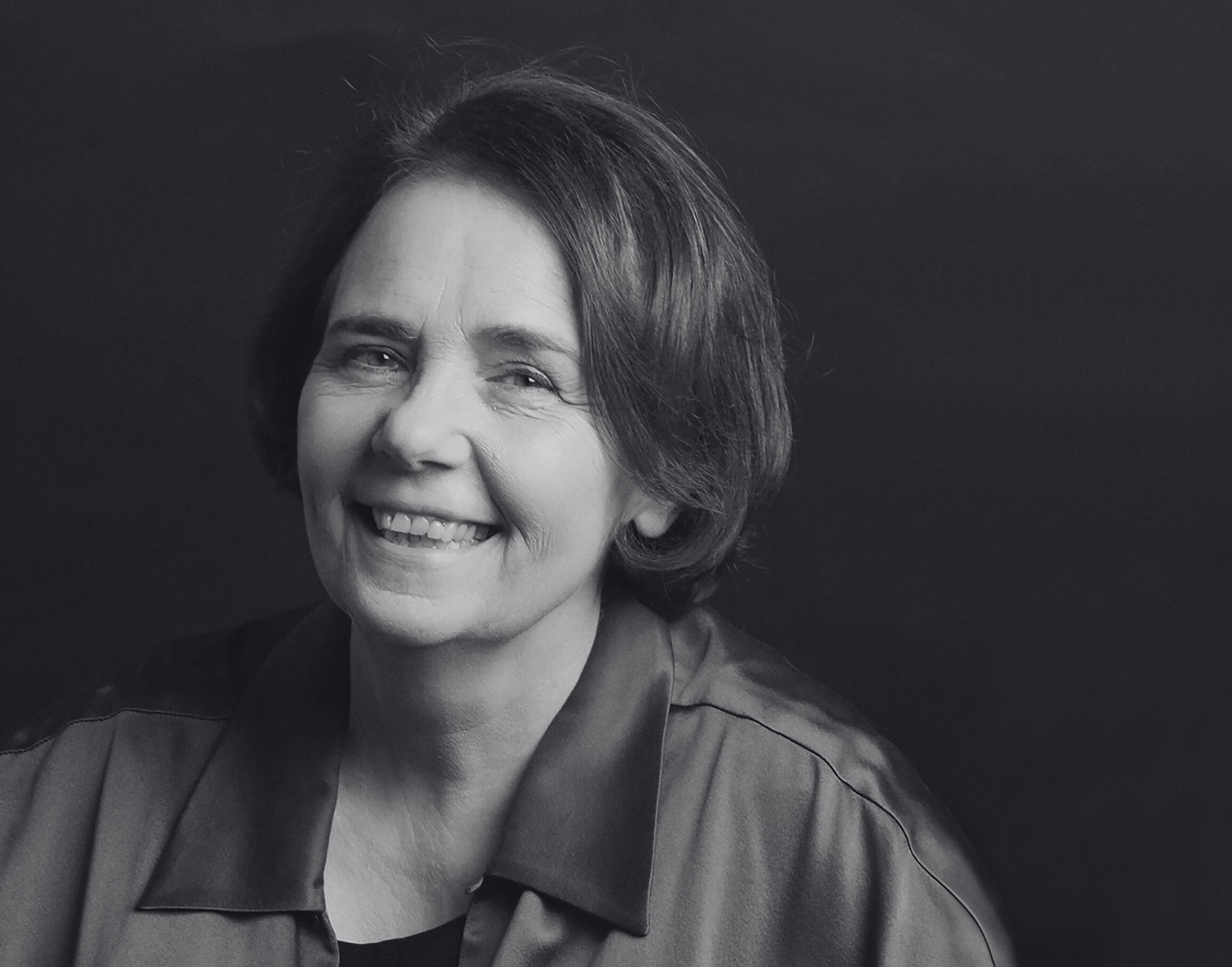 Written By
Written By
29 THE MARQUETTE JOURNAL
Grace Cady Photo By Earl Wilsom
Before she was the “New York Times’” first–ever woman to be appointed editorial page editor or held a seat on the Pulitzer Prize Board, Gail Collins was an inquisitive and bright-eyed student at Marquette University.
Collins grew up in a fairly conservative town and attended a Catholic girl’s high school in the Cincinnati area before making the move to Milwaukee and enrolling at a Jesuit institution for her college years. Between Collins’ upbringing and the general ignorance of the time, she was not often exposed to LGBTQ+ related issues.
“When I went to Marquette, I was pretty reasonably conservative,” Collins said. “I hadn’t had much outside experience, and I was certainly not rebellious in any way, shape or form.”
However, she found herself thrust right in the middle of a gay rights protest on her college campus. It all happened when Allen Ginsberg came to town.
The power of poetry, a doubleedged sword Collins was sent to a student conference with a few other peers the summer before her senior year of college that took place at the University of Illinois UrbanaChampaign. There, she met poet Allen Ginsberg.
Ginsberg was an American poet and writer influenced by Jack Kerouac, William S. Burroughs and Neal Cassady — other formers of the Beat Generation. He was a highly decorated poet who won awards such as the National Book Award for Poetry and the Robert Frost Medal. However, he is most synonymous with his poem “Howl.”
“I saw the best minds of my generation destroyed by madness, starving hysterical naked / dragging themselves through / angel-headed hipsters burning for the ancient heavenly connection to the starry dynamo in the machinery of night …”
Lines such as this proved to be dynamic, provocative and a bit unsettling depending on the reader’s perspective.
“a lost battalion of platonic
conversationalists jumping down the stoops off fire escapes off windowsills off Empire State out of the moon / yacketayakking screaming vomiting whispering facts and memories and anecdotes and eyeball kicks and shocks of hospitals and jails and wars … “
As a part of the Beat Generation, Ginsberg participated in peddling out this kind of daring poetry to the public.
“Just that idea (the beat movement) of a new way of looking at poetry and literature, that was sort of part of the rebellious spirit of the era even when it came to things like rhythm and words,” Collins said.
But to many college students, Ginsberg was simply “… famous at the time for being sort of a hippie poet,” Collins said.
Once on campus at Illinois, Collins had the chance to meet and speak with Ginsberg. She admitted that she was “near illiterate” when it came to poetry, but she felt welcomed by Ginsberg and remembered his kindness vividly.
“He was the nicest guy in the entire universe,” Collins said.
During their interaction, Collins and her peers asked Ginsberg if he would be willing to read some of his poetry at Marquette if he ever were to be in or around the Milwaukee area. He told them that he would love to.
The plans were being coordinated and finalized for Ginsberg to do a reading on campus, but the event was stopped in its tracks.
“Then, the (Marquette) administration looked him up and found out that he was taking his clothes off at a reading and that he was a lefty and that he was very into sexual liberation — things that Marquette was not into then — so they said he couldn’t come,” Collins said.
At the time, Father Richard Sherburne was the dean of students. Taking action with the help of a friend
Soon after hearing this news, Collins and her peers formed a group that stood up against this decision and fought for their right to free speech.
In 2022, Collins wrote an opinion piece
about this for the “New York Times” titled “When Allen Ginsberg Came to Town,” where her longtime friend, writer Con Lehane, commented on his experience as part of the student rebellion:
“As I remember things, homosexuality was the reason the administration gave for canceling Ginsberg’s appearance,” Lehane stated, according to Collins’ piece.
Collins interjected to say that Lehane is still one of her closest friends and that he lives in Washington, D.C. now, but she still sees him once or twice a year along with his children and grandchildren.
Lehane was — as Collins noted — far more involved in the political left than her. But still, this was something new for both of them and she knew it was important to take action.
“It was just inconceivable to me that he could be a ‘bad guy’ — and of course, our knowledge of homosexuality back there was really, really pathetically limited,” Collins said.
Collins said that a group of students knew they “wanted to do something” about this incident and that the administration had given them a perfect way in to form a rebellion of sorts.
“It was like this opposition movement,” Collins said of their efforts to give administration a ‘piece of their mind.’
And that they did.
“We got very rebellious — we had demonstrations and a sit-in at the dean of students office,” Collins said. “Ginsberg came and we marched through the city. He went to UWM and gave his speech there.”
A forceful comeback, an undeniable turning point
Although he could not speak at Marquette, Ginsberg was down the road at the University of WisconsinMilwaukee where he read some of his poetry to its student body.
Collins and her friends went to the event. She said that they were interested to see what he had to say and how he would be received by the students there.
“‘We will all go upon the same cross ultimately — there is no need for
“We got very rebellious — we had demonstrations and a sit-in...”
Gail Collins
anger,’ I remember Ginsberg telling the crowd. Still didn’t have much of a grasp of poetry, but I knew a good comeback when I heard one,” Collins wrote in her opinion piece. Beyond just an opening for her to experience young adult rebellion and pushback, Collins said that she remembers this to be a major turning point in her life.
“I always saw myself as a moderateworks-within-the-system person before. Thinking back, I wonder how much longer it would have taken me to figure out I was against the war in Vietnam if I hadn’t been a veteran of the Ginsberg censorship fight,” Collins wrote.
Collins also said that, although she had already known she wanted to be a journalist, this experience opened her eyes to new possibilities within that career.
“I came to realize, again, how unlimited being a journalist was,” Collins said.
It also opened her eyes to the importance of standing up for social change and progress. A concern ahead of her time considering Collins’ young age and the decade she was living in.
Standing up for gay rights is something that Collins now regards as the “next wave of moving into the future” presently — comparing it to the progression women have seen in their legal and societal rights.
“The idea that women should be regarded as leaders and people who were capable of doing every single thing that guys did is something that only began in my era,” Collins said of modernizing the status quo, “and,
to be honest, we didn’t know a thing about homosexuality back there.”
People can change and grow There was much to learn and a long way to go. In that spirit, an olive branch was handed to Collins somewhat unexpectedly.
“Some time back – maybe about ten years ago – Marquette invited me back to give a talk and say ‘hi.’ So, I came back and the only pictures they really had of me were the ones where I was sitting in the dean of students office,” Collins said.
“After it was over, this sort of elderly guy came up to me and said ‘You don’t remember me but I’m Father Sherburne. I was the dean of students when you were there and that was my office you were sitting in. I’ve been retired for ten or fifteen years now in a monastery, but I left the monastery to come to see you today to tell you that you were right, and I was wrong.’”
Collins even remembered calling all of her friends from back then to inform them of what Father Sherburne said to her. Although, she did not hold any ill feelings towards the dean or Marquette.
“I had a great time — I think back on it very fondly. It’s (Marquette) a much better place in many ways now. You guys are getting a much more high level, exciting education than we got. But we got a chance to rebel against everything,” Collins said warmly. A love long-held Collins later bridged the gap between an interest in political issues and a love for writing by chasing a career in journalism. After graduating from Marquette, she went on to obtain her master’s in government from the University of Massachusetts–Amherst. Of course, later and after much grunt work reporting at other, smaller outlets, Collins landed herself a spot at the Times.
When first offered this position, Collins says that she told the inquirer that he was “out of his mind” to want her to be the editorial page editor. However, she took to the challenge when he told her that, “there aren’t that many first women left to do things anymore.” Unless she was interested in becoming the commissioner of
baseball. She was not. But, this opportunity for her was a long time coming.
She recalled that an early love for writing came largely from her mother — a wife and mom during the World War II era who was not granted the same kind of opportunities to pursue her dreams.
“My mother was really into it (writing),” Collins said, “but she never really got any opportunity to have a job or have a career, and she was always very into writing. When I kind of started playing around with it when I was a kid, she really encouraged me.”
Collins even noted that her mother registered her for an acting, writing and public speaking class within a small, private academy.
“I had to write something that I could perform, and so I did this sort of funny thing about a babysitter calling, talking to the mom of the kids and terrifying her with the report,” Collins said.
From then, she wrote about eight more of these short stories that went on to be published for children to perform as public readings. Collins was also involved with writing and journalism at an early age through other facets.
“I was in the school newspaper when I was like twelve, I think – so, I mean, I kind of always thought I would be a writer,” Collins said. That was a large part of her choice to attend Marquette since they had a journalism program.
When Collins was a student at Marquette, she was offered the position of Journal editor. However, the tradition of student media was to have one male and one female coeditor. Collins was asked to make a selection between two male peers for who would be editor alongside her.
“Neither one — I just want it for myself,” Collins said.
Collins has carried that tenacious spirit and strong voice with her throughout her career. She now continues to write about American politics and culture for the “New York Times” balancing an informed arsenal and an edgy sense of humor.
30 31 April 2024 THE MARQUETTE JOURNAL
l
coloring outside theLines
Written By Sofía Cortés
Lion’s Tooth in Bay View is an artistowned-independent bookstore, cafe and art space, specializing in giving the opportunity to local artists and authors to showcase and sell their work.
Since their opening in 2019, they’ve supported hundreds of artists as a part of their mission.
Cris Siqueira, co-owner of Lion’s Tooth, is an artist, writer, filmmaker, singer/songwriter and journalist.
Siqueira began her art career by making her own zines when she was in her teens. Later on, she opened her own bookstore in Brazil before moving to Milwaukee and opening Lion’s Tooth. Today, she is working on her first long–form comic project.
Siqueira said she and her co-owner, Shelly McClone-Carriere, wanted to open a business, but not one that surrounds itself by capitalism; one that held a strong mission to support local artists and focused on the future
of the progressing art community.
“When people come to Lion’s Tooth, they’ll buy something. They go, ‘I just love that this person did this and I just want to support this person,’” Siqueira said. “Even if it’s a sticker, you’re supporting the artist by supporting their design.”
Their mission has remained clear throughout the time Lion’s Tooth has grown as a business.
“Our mission is to support local artists and authors, so we always carry whatever people bring in. We want to help form a community and we want to be a hub like the other many hubs the city has,” Siqueira said.
Siqueira said any artist can bring in their work, no matter who it is.
As long as the work is local and doesn’t include anything hateful, Lion’s Tooth will take it, sell it and support the artist.
“We’re the most helpful for people who are starting, you can get the
In terms of alternatives to disengage with social media and the internet when it comes to art, tactile forms of art are making their way back into people’s lives. Magazines, zines and other forms of physical art are regaining popularity.
Zines were extremely popular in the 90s, but since the resurgence of tactile art, more and more artists have been pursuing this art form. Some examples of zines that can be found in Lion’s Tooth and on their online storefront include “Bubbles” by Ryan Holmberg, “Arcana de Flora” by Luke Chappelle and “Fake A$$ Rappers“ by KPolly (Kristopher Pollard).
Many of these zines are geared specifically towards an adult audience and the same goes for some of the comics in store as well. Siqueira’s comic series, which is currently in the works, titled “Cicada” is made for adults.
With artists making these zines and comics that tackle and speak on adult and world issues, it encourages adults to jump back into these art forms once again as readers.
Photos By Katie Craig
experience of doing an exhibit, or with our artist residency, you get the experience of having critiques. We do believe in supporting everybody regardless of age,” Siqueira said.
Like everything else, art and the way people consume art is ever–changing. Siqueira spoke about the future of art and expressed that the only way to move forward is to embrace and support art in local communities.
“I think that people are very tired of social media. There are many ways to work online but I think artists are much better face to face, or at least in direct engagement with galleries, places that can carry their art. I think it’s become a toxic environment for artists,” Siqueira said.
Posting and publishing art online allows for more people to engage with the art, but not always in a healthy way due to things like online thefts of work and artists not getting compensated for their work.

Independent music and art venues around the city have been supporting local artists for many years and together have formed a hub around Milwaukee.
Music venue, the Cactus Club, has been opening its doors to book and art fairs, and has become an essential piece of the hub Lion’s Tooth is a part of as well. This is just one example of one of the many businesses that have played their part in supporting local art.
To cultivate a city and a hub within the city, it takes a number of art–friendly spaces to ensure the future of local artists.
“There’s a lot happening in Milwaukee right now and with the way people are supporting each other, it gives me a lot of hope for the future,” Siqueira said.
From up-and-coming musicians to artists and authors, these hubs around Milwaukee not only want to support artists who have been a part of the community for a long time, but new artists as well. This is to keep art prominent and important throughout cities.



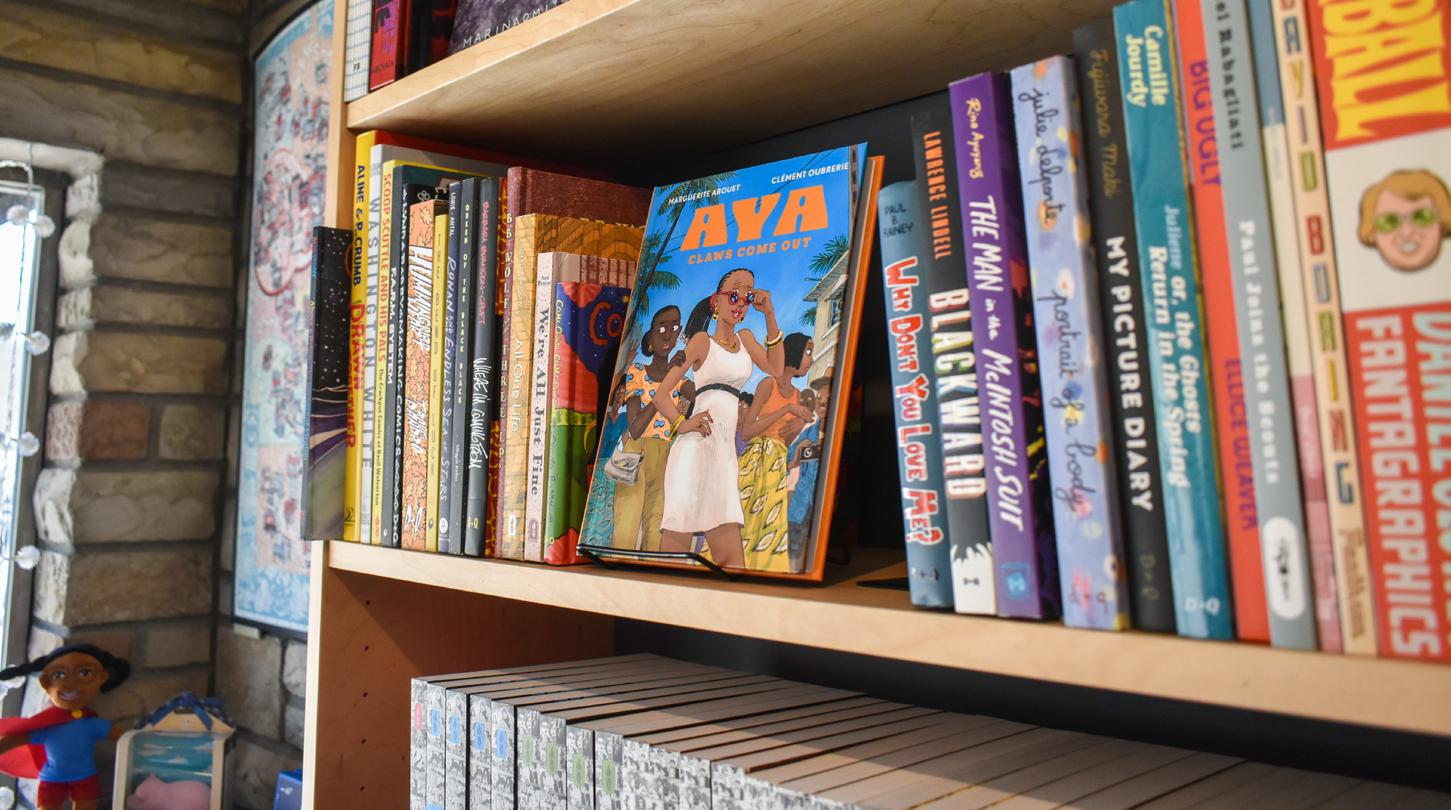
32 33 April 2024 THE MARQUETTE JOURNAL
@
LOVE LOSE to and to and
Written By Mimi Sinotte
Suicide is among leading causes of death in America.
The American Foundation for Suicide Prevention is a voluntary health organization that advocates for those who have been affected by suicide through prevention walks in more than 400 communities nationwide. AFSP is funding 38 new studies that will bring their current investment to $20 million with another 100 ongoing studies.
Efforts are being made to connect practices of AFSP to localized communities and college campuses.
On April 6, the annual Marquette University Out of the Darkness Walk, hosted by the Center for Student Wellness and Health Promotion, took place. The walk started at Ray and Kay Eckstein Commons outside of the AMU and spanned three miles around the perimeter of campus on Kilbourn down Clybourn.
Elizabeth Gnau, AFSP Campus Walk Chair and a sophomore in the College of Nursing, hosted the campus walk and said it was important for students to be aware of the on-campus help
that is offered through organizations such as the Wellness Center.
“Suicide touches one in five American families. We hope that by connecting with one another, we will draw attention to this issue and keep other families from experiencing a suicide loss. Our goal is to save lives and bring hope to those affected by suicide,” Gnau said.
The Wellness Center does programming around the eight dimensions of wellness: physical, intellectual, financial, emotional, social, occupational, spiritual and environmental.
In addition to this, they also do oneon-one peer coaching with students connecting them to on–campus resources along with AFSP.
“We’re saving lives and bringing help to those affected by suicide,” Gnau said.
According to the AFSP, “These events give people the courage to open up about their own connections to the cause, and a platform to create a culture that’s smarter about mental health.”
Gnau said she had known about AFSP for a while after first attending the University of Wisconsin-Madison’s campus walk. After learning that Marquette did not have a suicide prevention walk, she decided to reach out to AFSP and bring one here.
“There is a director for the whole state of Wisconsin, and I worked pretty closely with her last year and the whole board of directors. We kind of collaborate and have meetings sometimes too to see what’s going well and I learned a lot from UW Madison because they raised like $50k,” Gnau said.
All donations give back to research and training in suicide prevention and just AFSP distributes $10 wristbands to help build mental health awareness. On walk day, students were given honor beads that represent all different colors that connect to the cause.
The purpose of honor beads is to connect people to the cause and find others who have experienced similar feelings.
All ten colors represent the loss of a loved one, ranging from white
to rainbow in honoring the LGBTQ+ Community. Red honors the loss of a spouse or partner, gold for the loss of a parent, orange for a sibling, purple for a relative or friend, silver for first responders/military, green for personal struggles or attempts, teal supports someone who struggles or has attempted and blue supports overall suicide prevention.
Angelina Galullo, Arts & Entertainment Audio Producer and senior in the College of Communication, met with Debbie Contreras-Tadych, licensed psychologist at the Marquette counseling center, to discuss student wellness on campus and what resources are available to aid in mental health wellness.
“We are the mental health clinic on campus. We are free to all full-time students graduate and undergraduate. We can help manage it. Sometimes students think ‘Well I don’t know that the problem is big enough or I don’t want to take a spot from somebody that might need it more.’ I always tell people, ‘If you are feeling distressed, if you have been trying to get through something and you haven’t been able to get through it, come to us,’” Contreras-Tadych said.
During their interview, ContrerasTadych also identified what “trauma” is, as it can come in many forms for college students. “Trauma is some sort of emotional response to a distressing event. So, it could be one major event or a series of events,” Contreras-Tadych said.
Contreras-Tadych said students can practice wellness at home or in a dorm by doing movement activities
“Our goal is to save lives and bring hope to those affected by suicide,”
Elizabeth Gnau
since trauma is found to be mostly held in the human body.
“Any sort of movements; via walking, dancing, singing, listening to music, being around others (or) journaling to combat symptoms of trauma because we feel it in our bodies so if we can do things to kind of self soothe those are also really important ways to help heal,” Contreras-Tadych said. While personal trauma is difficult to deal with alone, it is important to also pay attention to friends’ behaviors who may have experienced traumas of their own.
Contreras-Tadych spoke about some ways people can navigate these kinds of situations.
“I think being patient and understanding. One thing is to be observant. So, if we notice marked changes in a friend’s behavior for example, you know, all of a sudden they don’t want to hang out anymore or they’re making excuses, or we see them being a lot more irritable, or not taking care of themselves right, or they’re drinking, or doing drugs. A lot of changes from their personality before is kind of a red flag,” ContrerasTadych said.
While dealing with heavy topics such as suicide prevention and trauma, it is important to also be aware of protocols for safe reporting. According to AFSP, when someone calls the national suicide prevention lifeline, they are transferred to a trained counselor who is close to their nearest crisis center. Each center is staffed with volunteers and others are paid staff and mental health professionals.
Although suicide prevention and awareness is not an easy conversation to have, Gnau said she wants to make it known that nobody is ever truly alone.
“You do not have to grieve on your own. You do not have to deal with these heavy things by yourself,” Gnau said.
A supplemental podcast episode was produced by Angelina Galullo in association with Marquette Radio. Visit https://marquettewire.org/
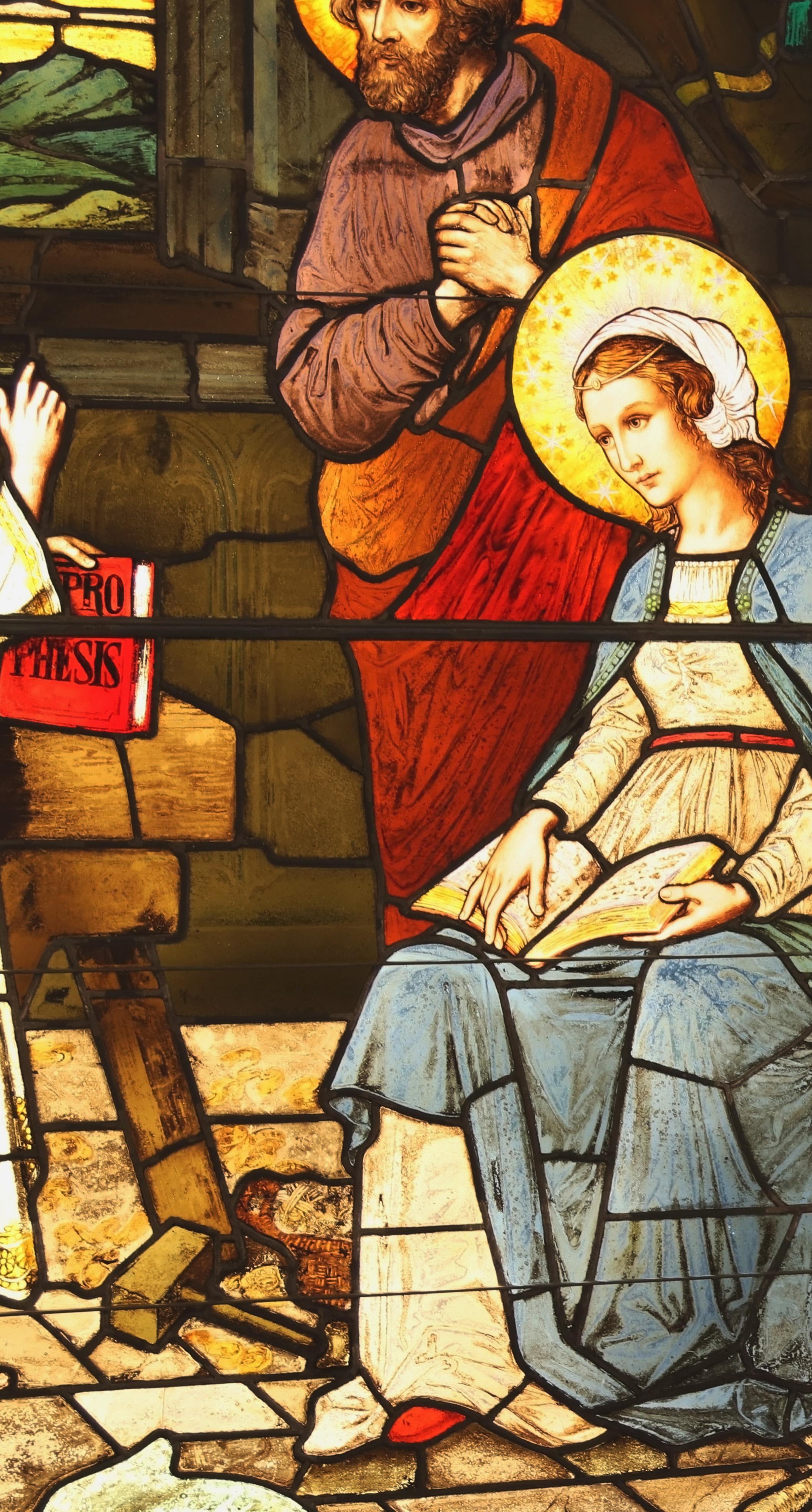
34 35 April 2024 THE MARQUETTE JOURNAL
Photo By Shannyn Donohue
j
Setting the Stage
Written By Lauren Puthoff and Sophie Goldstein
What do people think when they see art?
Is it pieces that are seen in museums or drawn in school? Is it coloring on the sidewalk or even playing with bubbles? Is it experiencing a Broadway play, or simply just watching your favorite movie?
Well, in reality, art is all of that. Art is what makes the world around us so beautiful. It is taking the simplest thing around you, and understanding its complexity in a new way. Art is about understanding that you can have an impact even when you least expected it. And that is exactly what the United Performing Arts Foundation does.
UPAF is a non-profit organization which works to support 14 various local arts groups in addition to providing funds for 55 other local organizations.
With every organization supported by UPAF, doors open for new art to be expressed. They work to inspire and challenge societal beliefs and standards through energizing and expressive art created by those of all backgrounds and ages.
The power behind each piece of art is not solely determined by the artist, instead it serves as a mode for interpretation, where the viewer can see the surface meaning –in addition to the deeper meaning.
Since 1967, UPAF has had one mission: Shaping a diverse, vibrant and sustainable cultural life for all. By being a community-based theater and arts program, UPAF uses donated funds to help support underprivileged communities by shaping a sustainable atmosphere where the community has a positive and creative outlet.
Not only does this organization stand out due to the variety of groups it supports, but it also is dedicated to helping underserved students through in-classroom activities and after-school programs.
In addition to supporting local performing arts groups that touch lives, UPAF holds educational programs for 50,640 children while increasing access to essential platforms for expression and understanding.
The performing arts can improve children’s academic performance, life
skills and job readiness as well as foster inspiration, hope and connection. Since this organization supports multiple groups, it ensures that there is always a diverse schedule of events planned.
From the Milwaukee Ballet performing the fairytale classic, “Cinderella,” to the Milwaukee Repertory Theater doing musical renditions in “Piano Men 2” to First Stage’s production of “Diary of a Wimpy Kid: The Musical,” the foundation plans it all.
Looking at all of these titles from an outside perspective, it can be difficult to see how all of these various productions fit together into one organization, but UPAF does not determine the groups it works with based on their content, rather it is based on the passions they have.
UPAF is more than just a place for children to experience art. It is a way for children to grow. According to the UPAF website, violinist Zindzi Frederick first began her musical career in first grade. Soon after, she joined Milwaukee Youth Arts Center, an affiliate of UPAF, where she spent time learning the violin and steelpan.
Now, Frederick is a recent high school graduate with no plans to end her musical journey soon.
Frederick said she credits the space offered by MYAC for allowing programming expansion and more opportunities for community children to get involved in the arts. She emphasizes that arts education is “important to holistic well-being,” and provides an opportunity to develop skills like critical thinking and communicating with others.
The arts play a major role in growing a community, especially as it relates to providing a larger understanding of social groups and cultures. Through the use of public murals, artists are able to create a visual representation of their emotions, while also providing a way for others to understand the events going on in the world.
One of the organizations UPAF supports is Danceworks. Danceworks has the vision to to be a source for arts education and community collaborations, and that is
exactly what they did for Belle. Belle joined Danceworks through UPAF, and even had the opportunity to win awards because of this experience.
“My first experience through Danceworks was doing Matt Mattox dance through my school,” Belle said in the “Support our Future through UPAF!” video.
“I had such a lovely time with an amazing teacher. Me and my mom really commended Danceworks for being able to do that virtually, because it was on Google Meets. It was just an amazing time and I had so much fun doing it, I even won two awards. I am so glad I found Danceworks.”
Beyond murals and paintings, the arts provide a positive outlet for communities to express themselves and help to bring people together in times of hardship. The arts community brings people of all different backgrounds together through a single commonality — the power of thoughts with an artistic twist.
UPAF is always accepting donations to help grow their organization, and provide support to children like Zindzi. You can get help get involved and donate, by visiting the Get Involved UPAF website.
Because art isn’t just about what you see on a canvas, it is what you see in the world.
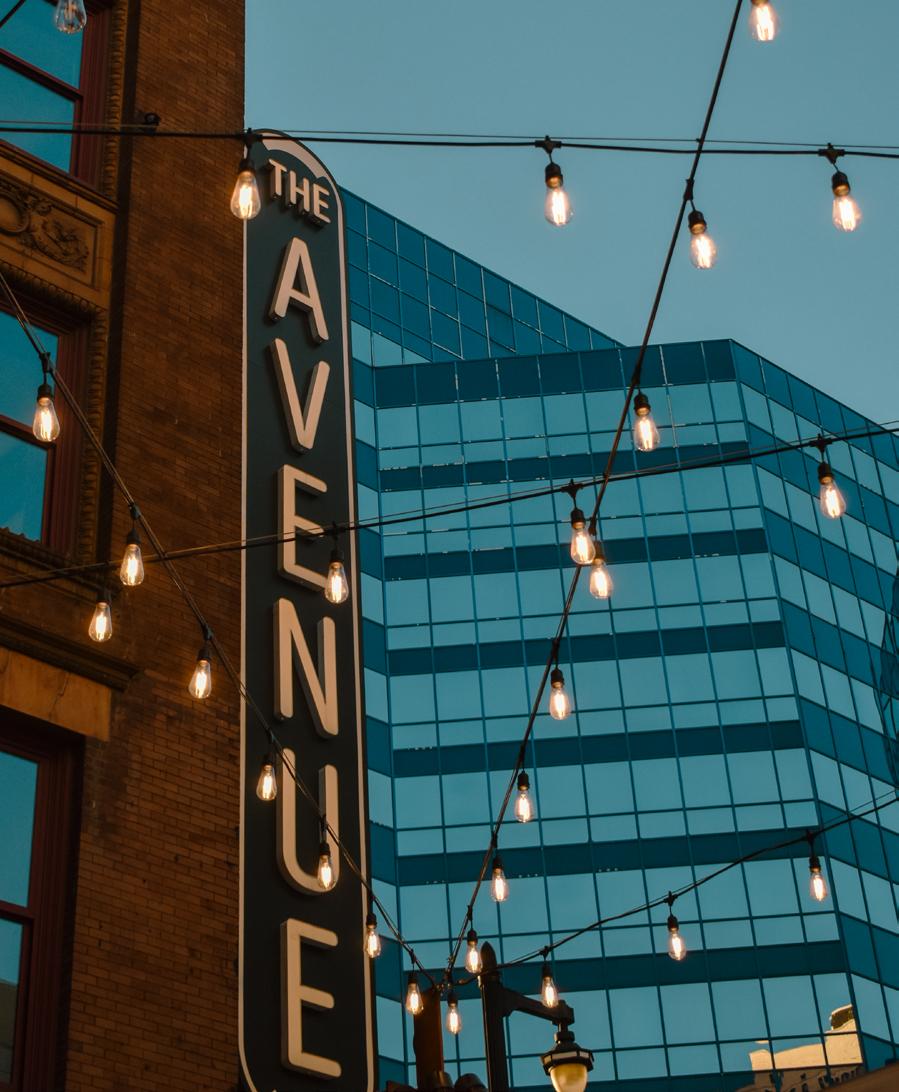 Photo By Katie Craig
Photo By Katie Craig
s 36 April 2024 37 THE MARQUETTE JOURNAL
Butterfly Effect

WHEN THE SMOKE CLEARS

39 THE MARQUETTE JOURNAL April 2024 38
“Butterflies can act as a catalyst, evoking and symbolizing change and the opening of new chapters.”
Photo By Keifer Russell
ilwaukee County has the second highest rate of food insecurity in Wisconsin with 15.4% of individuals being affected.
Over 110,000 Milwaukee County residents reported experiencing food insecurity in 2020. The statewide rate for food insecurity is 10% while the national average is 12.5%. On campus, one in five Marquette students responded “yes” to having experience food insecurity during the past school year.
A survey done by Feeding America found that out of the 150 food banks that responded, 129 were working to focus on food insecurity for college students.
110 of them distributed food directly to college students, which Feeding America found was the most common method towards approaching college students facing food insecurity. The second was by connecting students to governmental food assistance programs. Feeding America has a program in Wisconsin called ‘Feeding America Eastern Wisconsin‘ that works through distributing food to food pantries and donation efforts.
adequately,” Little said.
Little said that there’s a presumption in society that if someone is in college, they can afford to be there. She said although there are student loans and financial aid options available, there’s a lot of biases around who actually is “food insecure” and who “deserves” food.
“A lot of that is very rooted in the welfare queen trope that was popularized in the 80s,” Little said. “So I think advocating for a greater understanding and empathy towards college students’ experiences today because we know that food is foundational to life — it’s a basic human right. We can’t exist without it.”
The welfare queen trope is a “powerful myth that portrays recipients of government aid as poor, unmarried Black mothers who live lavishly on undeserved financial assistance — (that) has long hindered adequate state funding for the poor.”
Oftentimes, Little said college students aren’t eligible to receive SNAP, the Supplemental Nutrition Assistance Program, which in Wisconsin is referred to
if they don’t qualify for government food assistance programs but are in need of those services and that support.
Jacob Leigh, director of James Place — a community resource of Elmbrook Church — said when it comes to governmental food assistance programs, they can also be “cumbersome” and “difficult to manage.”
“There’s a lot of food stuff within the governmental programs where the food they make you purchase is actually food that’s not good for your health,” Leigh said. “That’s the thing that really frustrates me is that you’re forced to buy things that aren’t good for you which seems so backwards.”
Leigh said, for example, the program WIC — special supplemental nutrition program for women, infants and children — has recipients buy fat free yogurt.
“Fat is actually a very important thing for kids. You don’t want them to have excessive sugars, but you can buy as much sugared up yogurt as you want as long as it doesn’t have fat in it,” Leigh said. “It’s a very backwards look on development.”
heavy sugar and carb intake can lead to diabetes progressing where it’s like, ‘why wouldn’t you want them (children) having a heavy protein, heavy fat diet especially as small children?’” Leigh said.
However, Leigh said these programs do provide food for people and it “genuinely helps people” that are struggling.
Today, there are other options aside from only being on governmental food assistance programs. There are food pantries and organizations in place aiming to help mitigate the food insecurity issue. In terms of Milwaukee, Little said there are “pockets” around Marquette’s campus of food pantries and other assistance organizations.
One of those organizations is Elmbrook Church which Leigh helps manage. Once a month Leigh said the church collects food from the congregation and distributes it to six different organizations in Milwaukee and Waukesha.
AT WHAT COST
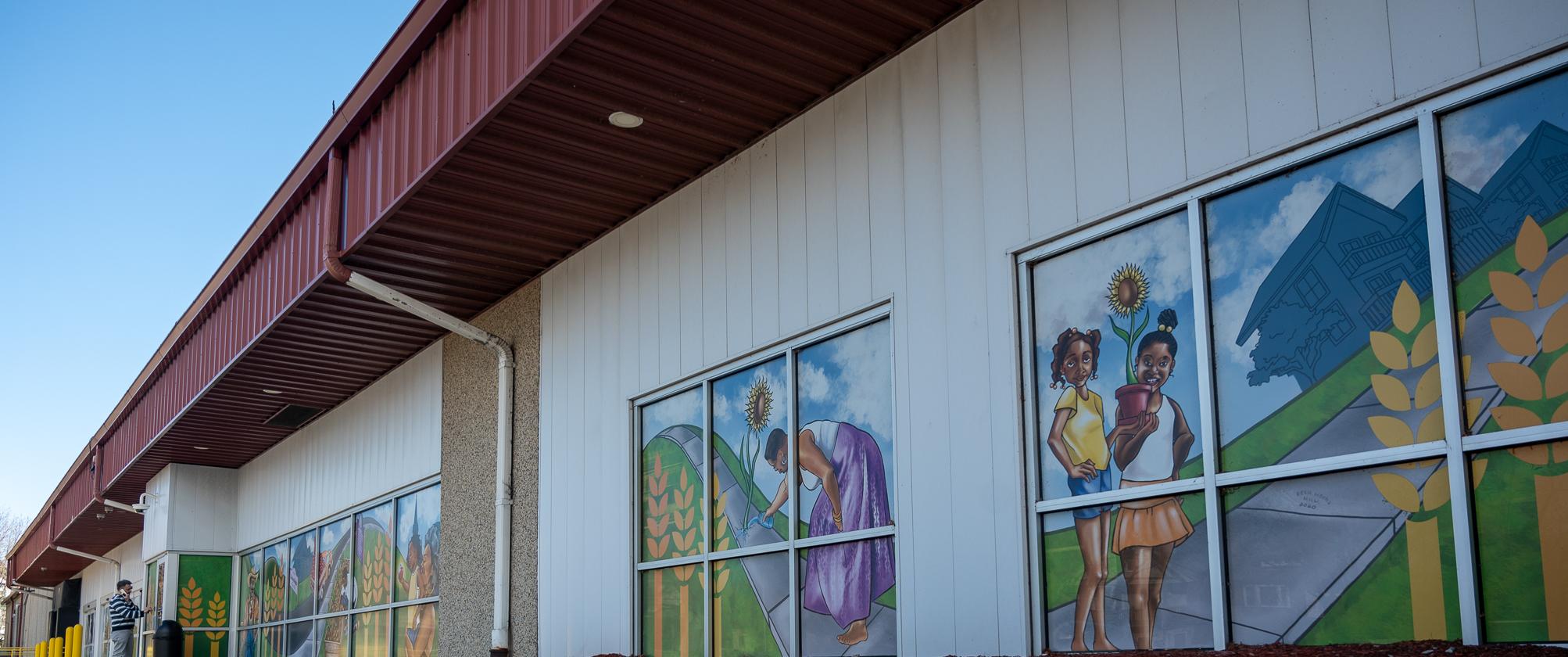
M
$ THE MARQUETTE JOURNAL 41
“I point people to the pantries and stuff that does exist because most of the time when I get messages from friends of people who know me who are food insecure they’re wanting me to order them a meal,” Leigh said. “And sometimes I do that, but most of the times I’m like, ‘Hey, there are some good organizations that you can get hooked up with who can give you stable food.’”
Leigh said there is a level where people have to show up to actually get it and to be sustained by these programs.
In Leigh’s six years working at Elmbrook, he said he’s seen food insecurity in the city go up and down but the big thing is that he hasn’t really seen widespread change.
Little said she noticed a lot of change during the pandemic, especially in terms of food becoming more expensive.
“During COVID-19, it’s been really interesting, because during COVID-19 there were expanded food share benefits and charitable food available through Feeding America that we didn’t have to pay for or it was very low cost and there was a very wide variety,” Little said. “Both of those benefits ended … and we’ve seen a much larger uptick in people looking for food.”
Little said especially community members who
“We know that there’s plenty of food it’s just a matter of if there’s the right distribution available for it.”
Christine Little
had those expanded benefits taken away “postpandemic” are finding a greater difficulty finding food now as there’s a much smaller variety through these government programs as well as food pantries.
“It’s a little bit more expensive and there’s just less available,” Little said.
Little said there are also more food pantries out there today that are utilizing the same food supply. “We’re all competing for these resources which is not how it should be. We know that there’s plenty of food it’s just a matter of if there’s the right distribution available for it,” Little said.
For the Backpack Program, Little said they’ve averaged around 100 individual visits to the pantry a month. Since January, the pantry has had around 570 visits total compared to previously when they used to see around 50 people a month.
For students who are struggling with food insecurity, Little said that experience affects different aspects of
their life including grades in school and their work life.
“Not having access to healthy and nutritious food is gonna impact how well they do in school and their jobs, because they’re having to prioritize between bills and food, their mental health and food and things like that,” Little said.
Because of that, Little said she’s seen the Backpack Program benefit students.
“Because when we’re hungry, we can’t focus and and that’s really stressful,” Little said.
The Backpack Program is located in Mashuda Hall. Students can register to shop at the pantry in-person. Hours are posted online, but Little said they change each week depending on what times people can work the pantry. Hours are updated on a weeklybasis online. There are no requirements to participate in the program.
The program is set up to be a shopping style experience, Little said, so although the program does provide bags, they also ask that students try to bring a reusable bag to go in and pick out what they want. Also in Mashuda is Marquette’s Neighborhood Kitchen which Little supervises as well. Little said the kitchen operates as a commercial kitchen space and works alongside the Food Recovery Network — a student group that recovers surpluses of food from campus trying to reduce food waste.
“We create meals for different community partners,” Little said. “Right now we have Cambridge Senior Departments, Benedict Center, Casa Maria Catholic Worker House and then we divert some of that as well up to the Backpack Program as well too when get in sandwiches, yogurts and bagels and things like that.”
A newer program established a few years ago is Marquette’s Swipe Out Hunger program. The program is based on financial need and the application opens at the beginning of the semester and reopens the following year. It provides 20 free meal swipes to students to use at campus dining halls.
“So it’s not a rolling application basis,” Little said. “There is a cap on how many we can give to students.” This year, Little said there were close to 200 students who got meal swipes but received approximately 400 student applications.
“It’s a program we’re looking to expand because it’s very popular, it’s quick, it’s easy, it doesn’t have the stigma attached to it that a food pantry does,” Little said.
The most recent initiative Marquette has established to combat food insecurity, though, is their partnership with Fork Farms that University President Michael Lovell announced during his presidential address Jan. 31.
Fork Farms is a hydroponics manufacturer based in Ashwaubenon. The hydroponics technology allows produce to grow using a nutrient-based water solution. The plants are “infused”with the solution which goes into the root chambers and flows back
down. Plants don’t even require soil through the hydroponics device.
There’s one machine in the STEM building on campus as well as another in Mashuda Hall that the Backpack Program is utilizing to grow fresh produce.
“We have lettuce growing in there right now. I started some basil seeds, so we’re just playing around. I’ve been told that the unit can produce up to 25 pounds of depending on what you’re growing,” Little said.
Little said she knows that some people have grown tomatoes in the machines as well. She said having this kind of machine will allow the Backpack Program to to provide fresher produce since all of their products they are receiving are donated, so finding fresh produce is oftentimes difficult for them since it goes bad within a certain window.
“So I think that it’ll help support that and just provide us another option to make sure there’s always fresh produce that is, like literally fresh, you pull it out and the root stays attached and it lasts for, like a couple of weeks,” Little said.
Little said it’s important to advocate for more funding through the state and federal level to help provide something equivalent to the free or reduced school lunch program for universities across the U.S.
“If students when they got to college were able to access a meal plan that is covered in financial aid somehow, I think that would be really awesome,” Little said.
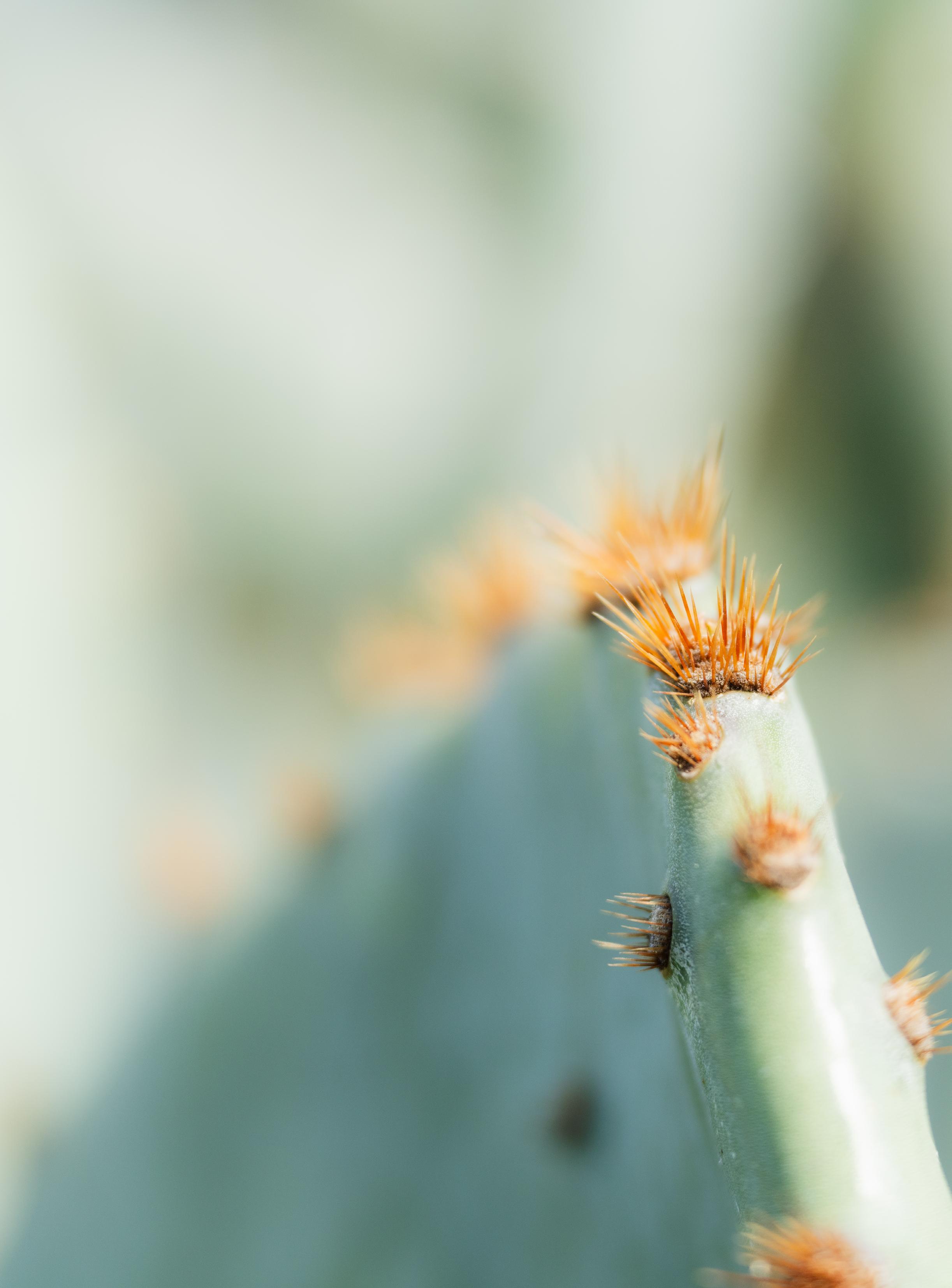
42 April 2024
Marquette University’s campus ministry has an anti-racism statement that “desires to promote justice and equity for all persons.” Campus ministry is creating and extending programs that advocate for the inclusion of underrepresented individuals and addressing social justice issues beyond the physical limitations of the Milwaukee campus.
Vevette Hill-Nwagbaraocha is an assistant director in campus ministry who has a background in social work and helps run programs that aid students, specifically those who may feel underrepresented, to find their place within the Marquette community.
One of the responsibilities HillNwagbaraocha said she has as an assistant director is titled “Pastoral Outreach with Students of African Descent.” This role helps students of African Descent find representation within campus ministry here at the university.
Hill-Nwagbaraocha said that being a Black Catholic creates a more personal connection to the mission and working with students who share the same identity.
Hill-Nwagbaraocha said she is proud to have been raised Catholic because her family has kept their faith even when it proves to be difficult.
“This skin color is not by accident, it’s by design. And so it does come with some hurt and some pain, but every time I rise above and that’s what God calls me to do,” HillNwagbaraocha said.
Places like campus ministry, HillNwagbaraocha said aim to be a safe space and reflect the entire student population, which is why she wants to do more to connect the Black Catholic community.
This semester, HillNwagbaraocha said campus ministry received a generous donation of $2,000 from the T.H Stemper Company, a family-
owned church supply business located in Milwaukee, to engage Black Catholics with their faith on Marquette’s campus.
“There’s a small pocket of students we have yet to really reach, and that’s what this money is going to go for. How we spend it is going to be up to the group,” Hill-Nwagbaraocha said.
“This is a trust walk with me and God...”
person died/was martyred,” Jeannine Marino wrote for the United States Conference of Catholic Bishops.
“The diocese, religious order, association or lay person(s) requesting (petitioning) for the cause asks the diocesan bishop, through a person known as the postulator to open an investigation into the martyrdom or life of the person.”
Portraits of the venerables were up for display throughout the month of February in the Alumni Memorial Union outside the campus ministry office.
Vevette HillNwagbaraocha direction right in the steps
she has helped rebuild the program when she was hired in 2023 after the COVID-19 pandemic prevented them from being able to take trips.
“It’s a service emergent program that focuses on, sharing our gifts and talents with others,” HillNwagbaraocha said.
Nwagbaraocha said.
Hill-Nwagbaraocha said that the immersion part of these trips specifically aligns with the philosophy of social work to ‘do no harm.’
On Feb. 13, Hill-Nwagbaraocha held a virtual meeting for any Black Catholic students at Marquette who are interested in meeting other students who share a similar identity. Another goal of this meeting was to search for ways to specifically use the $2,000 in a way that honors their faith.
Hill-Nwagbaraocha also said that it is important for Black Catholic students specifically to have someone to look up to as a role model.
She made sure that the Marquette community was aware of the African American Venerables who are up for canonization within the Catholic Church.
“A cause of canonization examines a person’s life and death to determine if they were either martyred or lived a virtuous life. Every cause of canonization has two phases: the diocesan and Roman phase. The diocese responsible for opening a cause is the diocese in which the
“When you look at what these people have done, it has everything to do with them being Black and being Catholic … we look at these Venerables and think that they lived the gospel and they look like you. That is a deep sense of belonging” Hill-Nwagbaraocha said.
Another program campus ministry has implemented that connects with underrepresented communities is the Marquette Action Program, which Hill-Nwagbaraocha said she is also involved with.
Hill-Nwagbaraocha said The Marquette Action Program coordinates trips that send students into marginalized communities that they live in, reflect on the social justice issues that are occurring and help service members of said community. The trips are centered around themes of rebuilding communities that experience urban poverty and help strengthen the health, education and human dignity within them.
M.A.P has been around for roughly 20 years, and Hill-Nwagbaraocha said
Hill-Nwagbaraocha said that M.A.P trips and other immersion programs are a great way for students to figure out their discernment of how they will service the world. Immersion trips can also help students find a particular vocation within their field of study and/or personal lives.
“Immersion trips can also help students find a particular vocation within their field of study and/or personal lives.When students immerse themselves in marginalized communities, it better helps them understand the people going through struggles and adds human value to the equation,” Hill-
March 9-16 M.A.P. took a trip to L’Arche in Erie, Pennsylvania. L’Arche is living community a for adults with disabilities that do not have family to take care of them. During M.A.P’s trip students helped clean and did various activities such as games, prayers and eating meals with members of the community.
“[L’Arche] has nine homes with people of varying abilities and these folks come and live in these communities, most of them for their entire lives. Some of them have been in homes where their parents or grandparents could no longer provide for them or passed away” HillNwagbaraocha said.
Hill-Nwagbaraocha said that she is proud to show up authentically as
herself, and encourages others to do so as well.
“This is a trust walk with me and God, he chose me to be born where and when I was born and to whom I was born,” HillNwagbaraocha said.
Hill-Nwagbaraocha said that none of us are born into perfect circumstances, but we can overcome these obstacles and find purpose within our lives, which is why she works in these programs through campus ministry at Marquette.
Photo By Forster Goodrich
Written By Ellie Golko
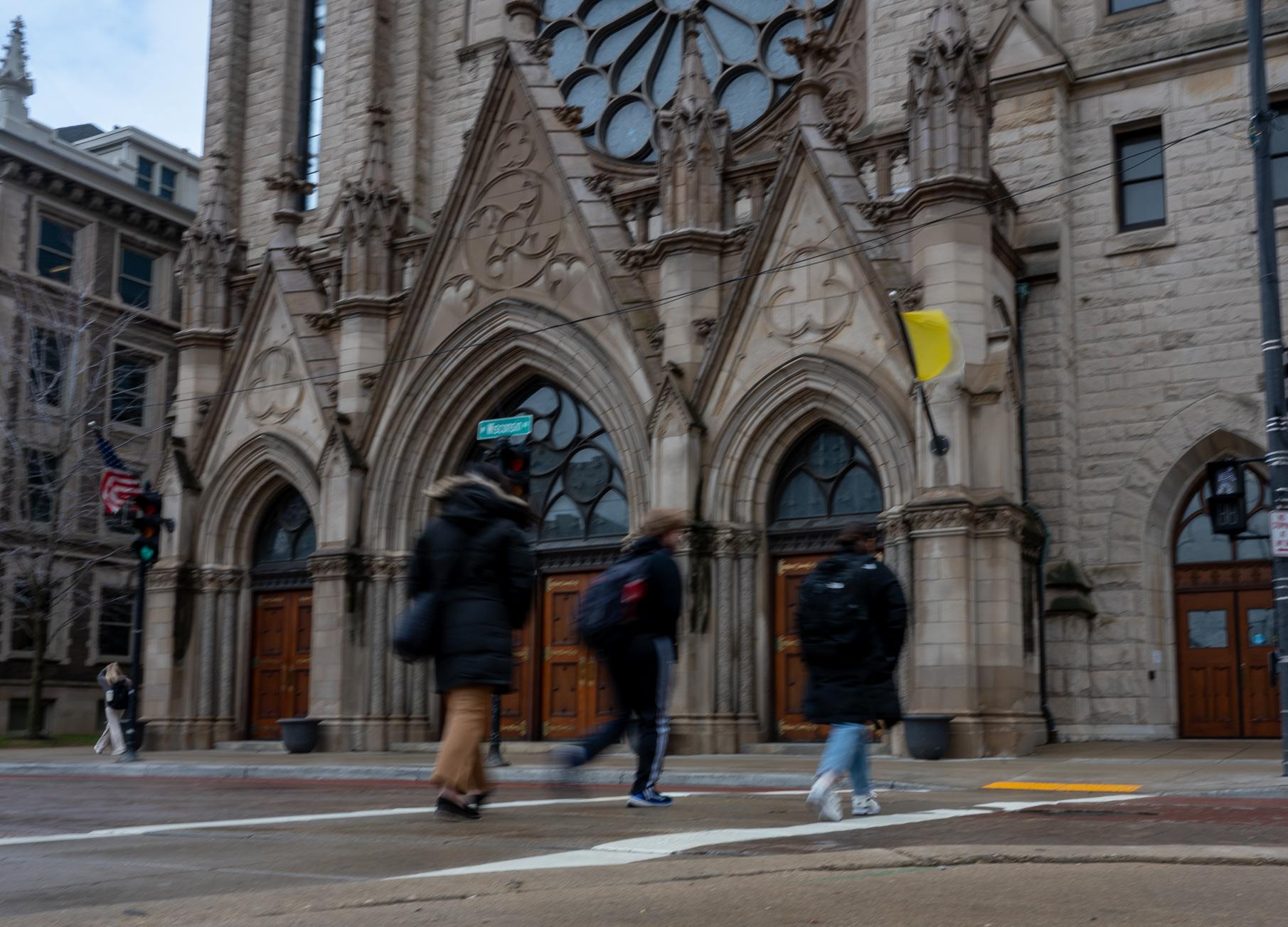
44 45 April 2024 THE MARQUETTE JOURNAL
)
WHEN THE SMOKE CLEARS


Bloom
“A small purple flower blossoms out of the greenery, evoking a sense of serenity and hope.”
47 THE MARQUETTE JOURNAL 46 April 2024
Photo By Keifer Russell

PHOENIX RISING
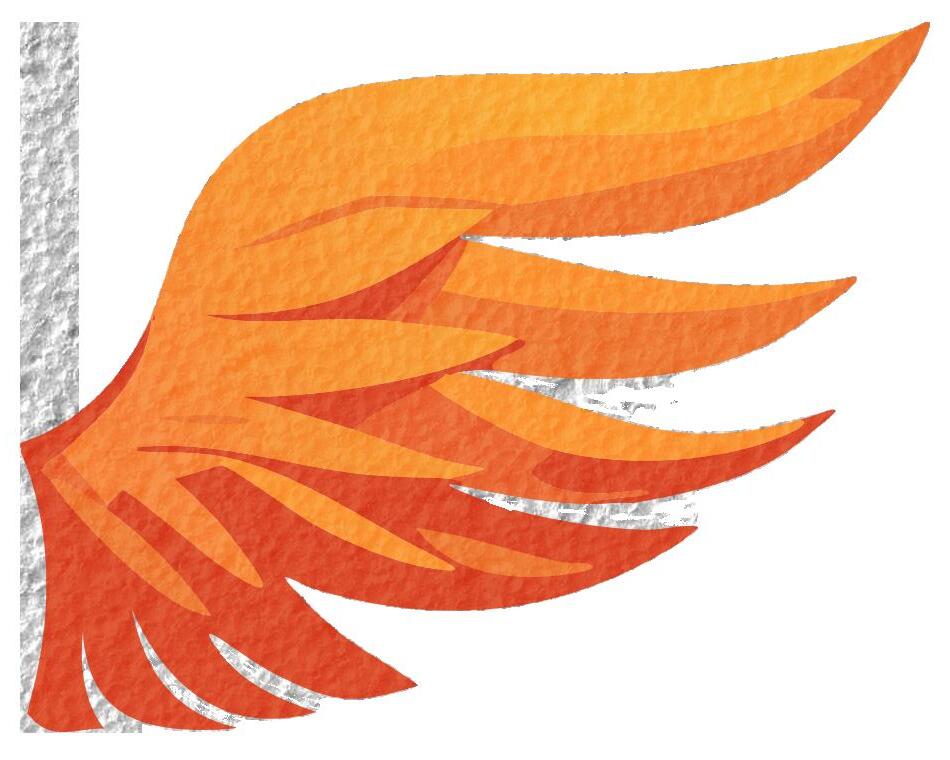 Written By Dakota Barnes-Rush and Benjamin Hanson
Written By Dakota Barnes-Rush and Benjamin Hanson
On Claire Kaifes’ college career stat sheets, an entire season and then some are blank.
After an ACL tear and an appendectomy, Kaifes sat out all of the 2021-22 season and then part of the 2022-23.
The two injuries have plagued her career so far, but it hasn’t stopped her from putting on the blue and gold jersey and showing up.
After her second season for Marquette women’s basketball, Kaifes played in every game. Despite her momentum, it would come to a halt during postseason workouts. As she was coming down from a layup, her
it wasn’t the most positive thing all the time, but she never came into training negatively.
“It’s a long, tedious process and I honestly don’t know if there was a day where she said, ‘I can’t do this anymore,’ which is unusual for long rehab. Usually there’s times when you just take a day, do what you got to do, and come back tomorrow. She never had any of those days. Honestly, I don’t know if I could have done that.”
Smith said that she would have to remind Kaifes to slow down in the process because she pushed her recovery harder with the goal of returning to Kaifes said commemorating every step of the process made recovery
with me every day while on the road when I had to train there. They’d come with me and just having people around me was really nice. They were always a great support.”
Kaifes was back on the court for the following season and played through January in 20 games.
Then, like déjà vu, everything stopped again when Kaifes had a surprise appendectomy in February of 2023. It caused her to miss the remainder of the season.
After the freak accident, Kaifes returned to the court at the beginning of the 2023-24 season for her fifth and final year. She said that for this season, she has learned things off the court to help her on it.
a year.
“My immediate thoughts with that was ‘Dang, I went through this whole year and nothing bad happened and now we’re only doing these skill workouts and this totally freak thing happened,’” Kaifes said. “Immediately, I knew that it was going to take me out of the whole next year, which was so unfortunate and very sad.”
Right away, Kaifes had people around her for support. Her strength coach Maggie Smith would be the person she would see almost every single day to work on getting better. Even though Kaifes wasn’t able to go out and help her team on the court, Smith said she approached every day without negativity.
“She was and still is positive all the time,” Smith said. “Claire took things really well, even though it probably hurt in the back of her mind. Maybe
“You’re gonna have bad days, but there will also be really good days,” Kaifes said. “You have to celebrate the little things when you’re dealing with ACL rehab. When I did my first jump. It was not pretty, but we celebrated that. It’s all about going back to the basics and celebrating those little things.”
Her team was behind her with every one of those celebrations.
“I always tried to be there as much as possible to cheer her on,” senior guard Rose Nkumu said. “Making sure that whenever I saw her in passing or was in the gym at the same time as her, I let her know I was witnessing all the hard work she was putting in just to get back. I had to make sure she felt the same love and energy that she gives to this team daily.”
Kaifes said having her teammates around her made the wins so much easier to achieve.
“All my teammates were such a great support team,” Kaifes said. “They would come with me during like certain [recovery] tests, or they would come to the strength room
“I used to be able to share what I was seeing before having to sit out during all those injuries, but I wasn’t very vocal about what I saw or what we could get better at,” Kaifes said. “But after, I was able to put into words exactly what I was seeing because was able to observe off the court. I’ve improved that as I’ve grown and learned from these things.”
Not only did Kaifes see growth in herself, but Nkumu said she brought the team together.
“Every day, she came in with energy to give to us even though she couldn’t step on the court,” Nkumu said. “It’s so easy to lose sight of each other especially when going through recovery and workouts that no one else really sees, but Claire was so aware and so present with us with her usual energy of high fives and celebrations.”
This season, Kaifes played in every single game, which was something she hadn’t done since 2021. She put in an average of 10 minutes on the court per game.
Despite everything that Kaifes has gone through, in other ways, Nkumu said she hasn’t changed.
“I’m so grateful that I’ve gotten four years to play with her and witness her strength and growth not only as an athlete but as a woman.”
great play, sacrifices her body to take charges and make big plays,” Nkumu said. “You got to start to see her light shine a little brighter. Getting to be back on the court with us and getting back to the ‘normal’ of being around the girls all the time.”
She finished by sharing how lucky the team is to have Claire.
“We’re really lucky to have someone like Claire on our team and I’m so grateful that I’ve gotten four years to play with her and witness her strength and growth not only as an athlete but as a woman.”

“I don’t think she’s that much different in the sense that she’s still

48 49 April 2024 THE MARQUETTE JOURNAL
Rose Nkumu
v
BURN
Written By Kaylynn Wright
out

According to the University of Michigan School of Public Health, only 10% of college athletes who struggle with mental health issues seek help. At Marquette, a studentathlete club called SHAPE is working to change this statistic by continuing the conversation of mental health awareness in college athletics.
SHAPE stands for Student Health Allies and Peer Educators and the club meets monthly to plan events for the athletic community.
“We’ll do some yoga, we’ll provide hot chocolate and snacks during midterms week,” Assistant Director for Academic Services Maureen Lewis said. “We’ll bring in a coffee truck during finals week. It’s stuff just to help. ‘This is a hard week; how can we make it better?’”
Junior track & field athlete Daylee Braden — the student leader of the group — said its main goal is to encourage mental health awareness in sports.
“We want to bring awareness to mental health because, obviously, it’s been such an issue throughout the past years and especially with COVID, so we’re trying to create this environment that it’s okay to have these emotions,” Braden said. “We’re going to go through struggles. Just putting an image out there and allowing athletes and whoever we find that it’s okay (and) we’re all human.”
SHAPE was founded in 2017 by former women’s soccer defender Madi Dunker and women’s lacrosse defender Alex Gambacorta along with Maureen, the club’s main facilitator, after they attended the first Big East Student-Athlete Well-Being Forum held at Georgetown.
“It came about from different conversations and different experiences and then finding those ‘lightning rods,’ those people in the space that are like, ‘I’ll stand up, and I would love to talk about mental health advocacy,‘“ Dunker, who is
now Marquette’s NIL General Manager, said. Kari Lewis — the mental health professional on campus — also works with SHAPE to provide training for its members. Using the slogan “Here to Hear,” she most recently did a session on how to be a better listener.
“Hopefully when kids leave here, if they were involved at that level, they are unafraid to talk to anybody who’s having a hard day,” Maureen said. “They just say, ‘Hey, I notice you’re a little bit down, want to talk about it?’”
Sophomore track & field athlete Gus Kasun decided to join SHAPE because of how others in his life have been impacted by mental health struggles.
“One of my close friends in high school, his brother committed suicide, and that was a big thing in my life because I knew him,” Kasun said. “My younger brother, he suffers a lot from anxiety, as well as my own struggles. Being able to be a representative of that is something that is super important to me because I see how it can directly affect the people around me.”
Braden is currently pursuing an undergraduate degree in counseling and jumped on the opportunity to join SHAPE to get hands-on experience.
“I’m super into mental health and bringing awareness to that, something that I’ve struggled with in the past…” Braden said. “It’s helped me bring a leadership role, and I want to help people … I love to be an ear for someone.”
Athlete burnout is a topic that has increasingly become a part of the mental health conversation, and it is defined by the Kansas Journal of Medicine as “a syndrome of emotional and physical exhaustion, a reduced sense of accomplishment, and sport devaluation.”
In her role, Maureen said she has seen more symptoms of burnout in athletes who participate in non-revenue sports.
“It’s great to have my teammates because we keep moving for each other.”
Daylee Braden
“Usually, it’s because they have another plan, like they’re going to go to law school or medical school … They want a different experience, and the 20 hours a week of practice plus competing every weekend is not allowing that to happen and feels like burnout,” Maureen said.
As a non-scholarship athlete, Kasun said he has witnessed his teammates struggle with symptoms of burnout due to this uncontrollable factor.
“It’s tough because you do see a lot of people that come in with a desire, but it dies down because we don’t have the reputation that the basketball team does or the volleyball team where they’re seen as these big figures on campus,” Kasun said.
“We’re not treated as equally as some of the other teams. It makes them (track & field athletes) feel less because they can’t do anything about it, so they don’t work as hard, don’t do as much.”
When Braden feels overwhelmed and burnt out, she said she reminds herself of why she is here in the first place.
“I love to run,” Braden said. “I want to be here. I want to be on my team. I want to be the best for my team, and it’s been so helpful because we have such a good culture on the track team in my eyes. It’s great to have my teammates because we keep moving for each other.”
Similarly to Braden, Kasun said his unconditional love for the sport is what motivates him on the good and bad days.
“For me, being able to come in day-in and day-out and train for two, three, four hours a day and dedicate that free time of your life to those things definitely brings a passion more than a short-term motivation,” Kasun said.
Braden said being in SHAPE has served as a constant reminder to practice self-care for herself as an athlete and human, which is especially relevant in her future career as a counselor.
“You’re going to be working with other people’s problems,” Braden said. “How am I going to help other people if I’m not even the best version of myself right now?
“I’ve seen a decrease in performance if mentally I’m not checked in (and) I’m not doing well … I just think back to those times, and I don’t want that to happen again because I know what it takes to be the best version of myself, so I’m never going to put myself in a situation where that can happen again.”
Seven years after Dunker founded SHAPE, it is still having those conversations and advocating for the mental health of student-athletes.
“It makes me proud to see that we’re passing on the baton, the torch, whatever it is you want to call it … But I’m proud that they’re carrying that on,” Dunker said. “It’s cool to see again year after year, people really step up and say, ‘This is important. This is something we want to continue.’”
50 51 April 2024 THE MARQUETTE JOURNAL
Photo By Keifer Russell
i
A supplemental podcast episode was produced by Trevor Hilson in association with Marquette Radio. Visit https://marquettewire.org/
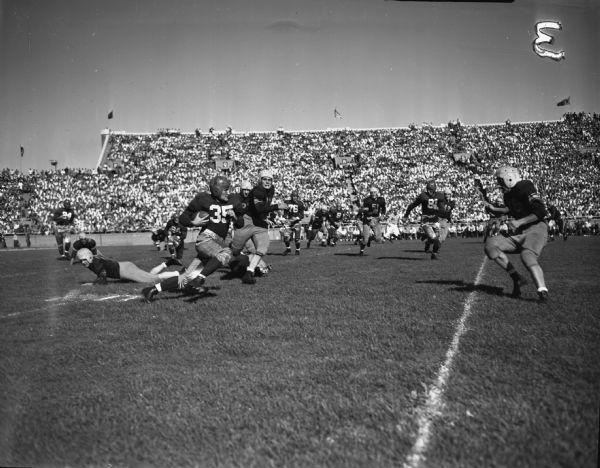

 Written By Sophia Woods
Written By Sophia Woods
Photo
Courtesy of Wisconsin Historical Society I
n the heart of the state capital of Wisconsin lies Wisconsin.
Badger territory.
But that isn’t all. Madison also houses the biggest rivalry in Marquette history.
The two universities have been I-94 rivals for over 107 years and are separated by a mere 78 miles. Since their first matchup on the basketball court was in 1917, the Badgers and the Golden Eagles have met 130 times, with Wisconsin leading the series 71-49.
The rivalry is a staple in both Wisconsin and Marquette student culture, so much so that the last matchup Dec. 2 at the Kohl Center between the two men’s basketball teams sold out. Upon their victory, Madison students stormed the court after the win.
However, the tension between the two teams does not stop at basketball.
Marquette volleyball junior right-side hitter Ella Foti has a love-hate relationship with Marquette’s biggest rival.
While Madison is home to some of the most intense games of her career, it is also where she grew up.
“It is crazy because I grew up down the road from the old fieldhouse where the Badgers played volleyball,” Foti said. “Growing up there, you bleed red and white, and everyone is a Badgers fan.”
However, Foti never saw herself at Wisconsin and decided to take a chance at being a Golden Eagle.
The past three years in the blue & gold, she returns to Madison as their rival, not as a fan or a student. But she feels as if her career has been a full-circle moment.
“I grew up going to their sporting events in the Kohl Center, the old fieldhouse and Camp Randall. Being able to play on that stage is almost nostalgic and a dream come true,” Foti said.
And while her hometown is not rooting for her, Foti said the opposing fans inspire her to play harder.
“I don’t mind being away at places because it lights a fire under me and makes me want to prove people wrong that much more,” Foti said.
It is not just the opposing teams that make a riot, but also the support from Marquette fans in the stands.
“It is really awesome having a great atmosphere and we have that at the Al and when we played UW at the Fiserv Forum, it was so amazing and so cool to be supported by so many people,” Foti said.
But it’s not just the fans that look forward to these matchups. The athletes competing are the ones that get the most excited.
“I think they are fun to have because it’s always a date on our calendar that we look forward to,” sophomore forward Ryan Amond said.
Amond said the added tension is a reason that he goes into the games with the same mindset as any other.
“For me, I don’t go into it any differently, but I know it’s a little more pressure because it’s a team that we play every year and it’s a big rivalry,” Amond said. “I know the coaches want to beat each other. The pregame you must ensure you are ready (for the game) and not let pressure get to you.”
Senior tennis player Andie Weise has battled the Badgers twice this season, given that the teams have
“I don’t mind being away at places because it lights a fire under me and makes me want to prove people wrong that much more.”
Ella Foti
been matched up since 2000. She has learned that the only way to handle the pressure and distractions is to stay true to her routine.
“I try not to change anything because I have my own rituals and patterns, and I don’t think it’s good to step outside of that and make it seem bigger than it is,” Weise said. “I just go into the match and prepare myself in the same way with the same mindset as I always do.”
However, despite the high stakes, Weise said she believes that rivalries are an essential part of sports.
“They are necessary because it creates more drama and anticipation,” Weise said. “They are fun, but they make everything a little bit more nerve-wracking because there is more pressure, and everyone wants to see who is going to win and people talk about it until the next matchup.”
52 53 April 2024 THE MARQUETTE JOURNAL
Sweet Revenge Sweet Revenge Sweet Revenge Sweet Revenge Sweet Revenge Sweet Revenge Sweet Revenge Sweet Revenge Sweet Revenge Sweet Revenge Sweet Revenge Sweet Revenge Sweet Revenge Sweet Revenge Sweet Revenge Sweet Revenge Sweet Revenge Sweet Revenge Sweet Revenge Sweet Revenge Sweet Revenge Sweet Revenge Sweet Revenge Sweet Revenge Sweet Revenge Sweet Revenge
j
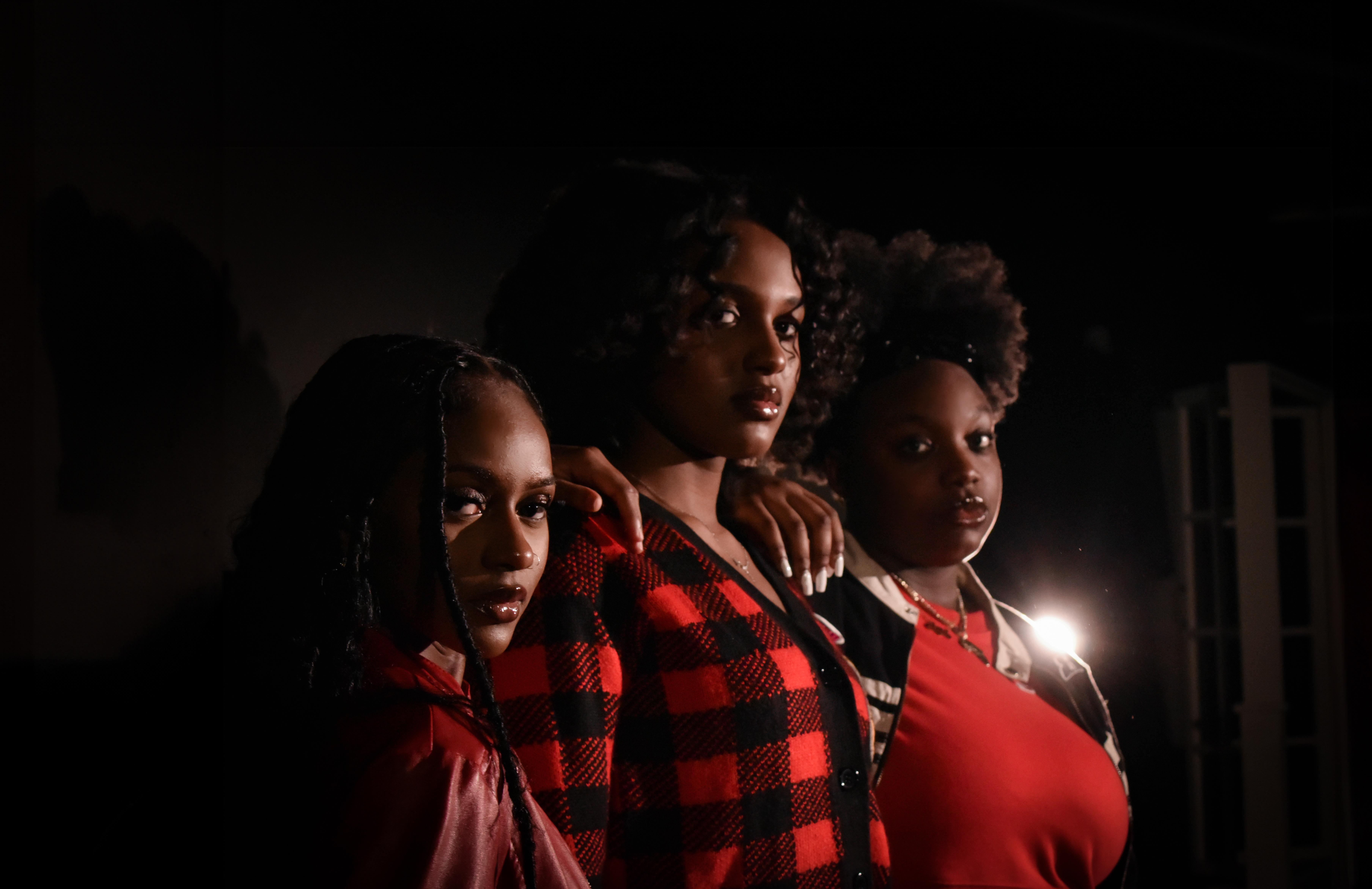
PLAYING WITH fire fashion shoot
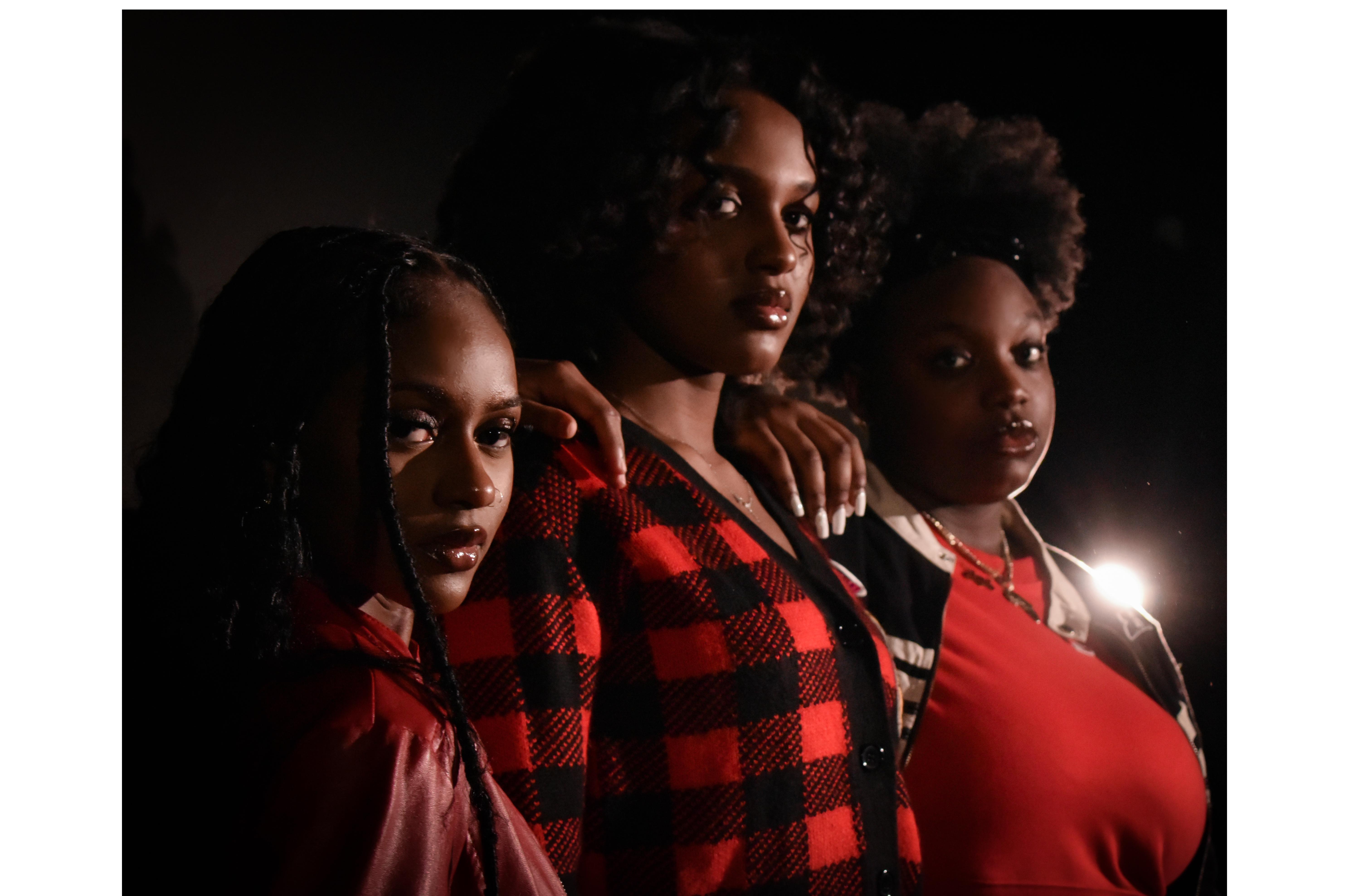
THE MARQUETTE JOURNAL 55
In collaboration with models from Vogue at MU

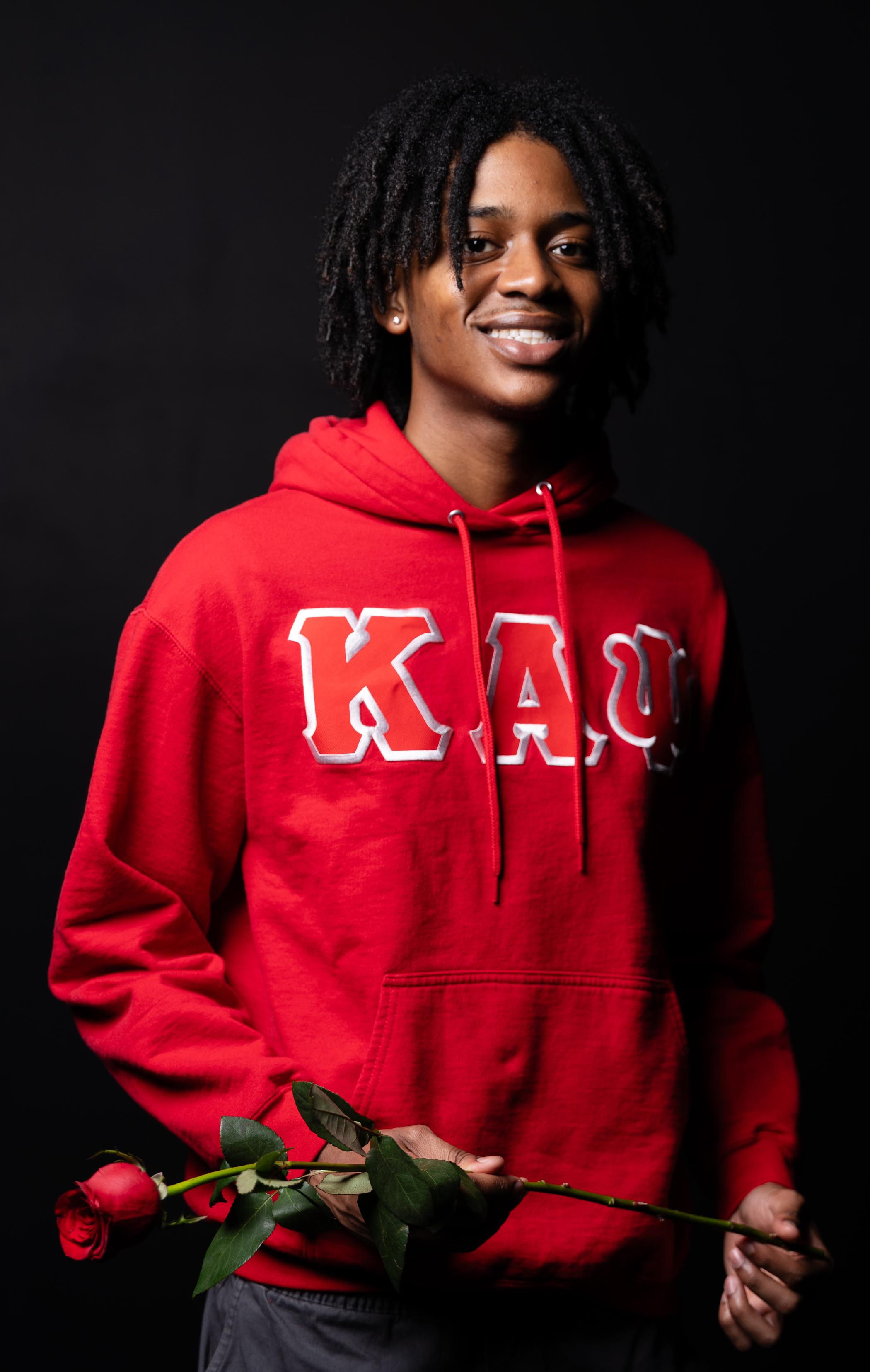



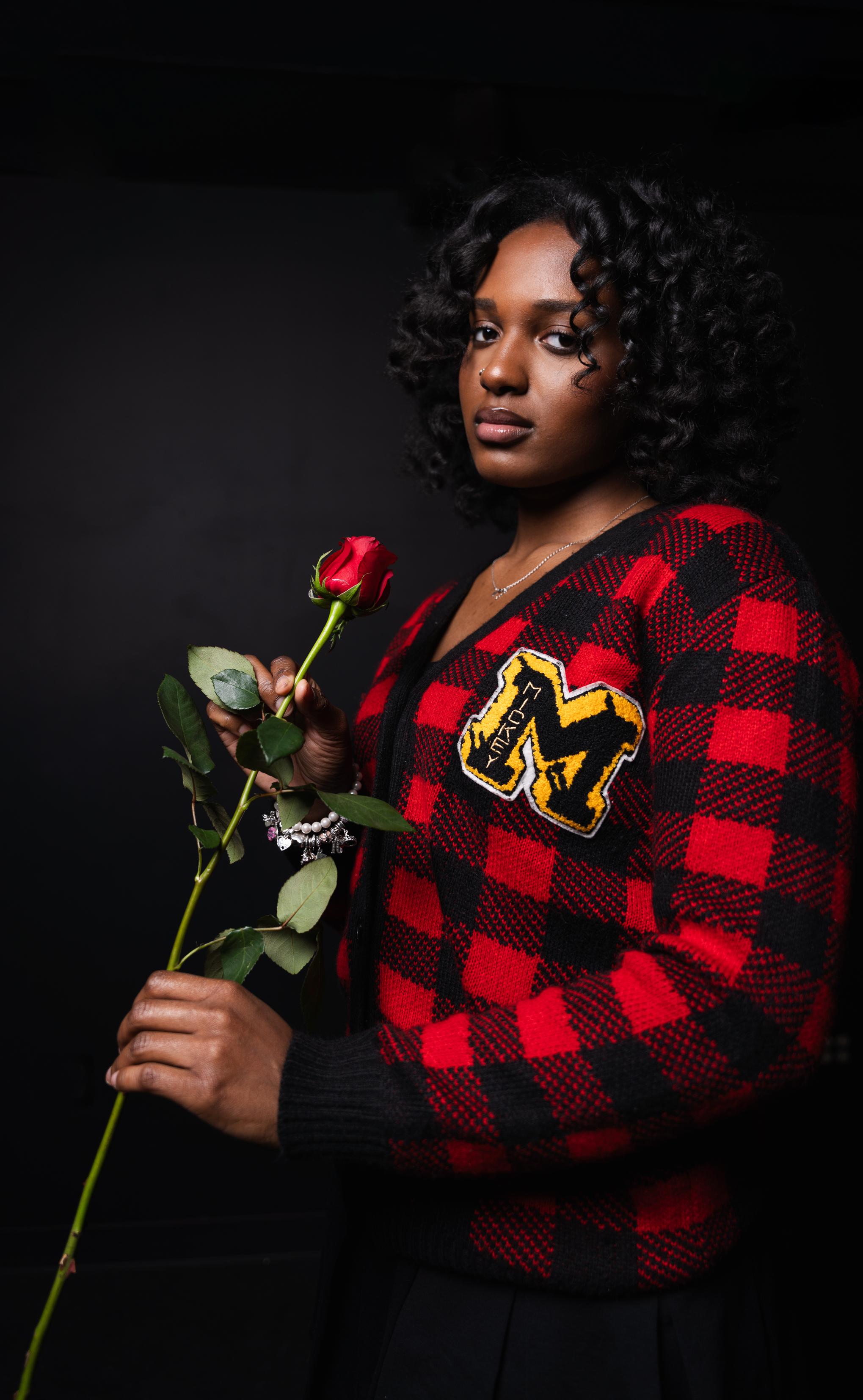
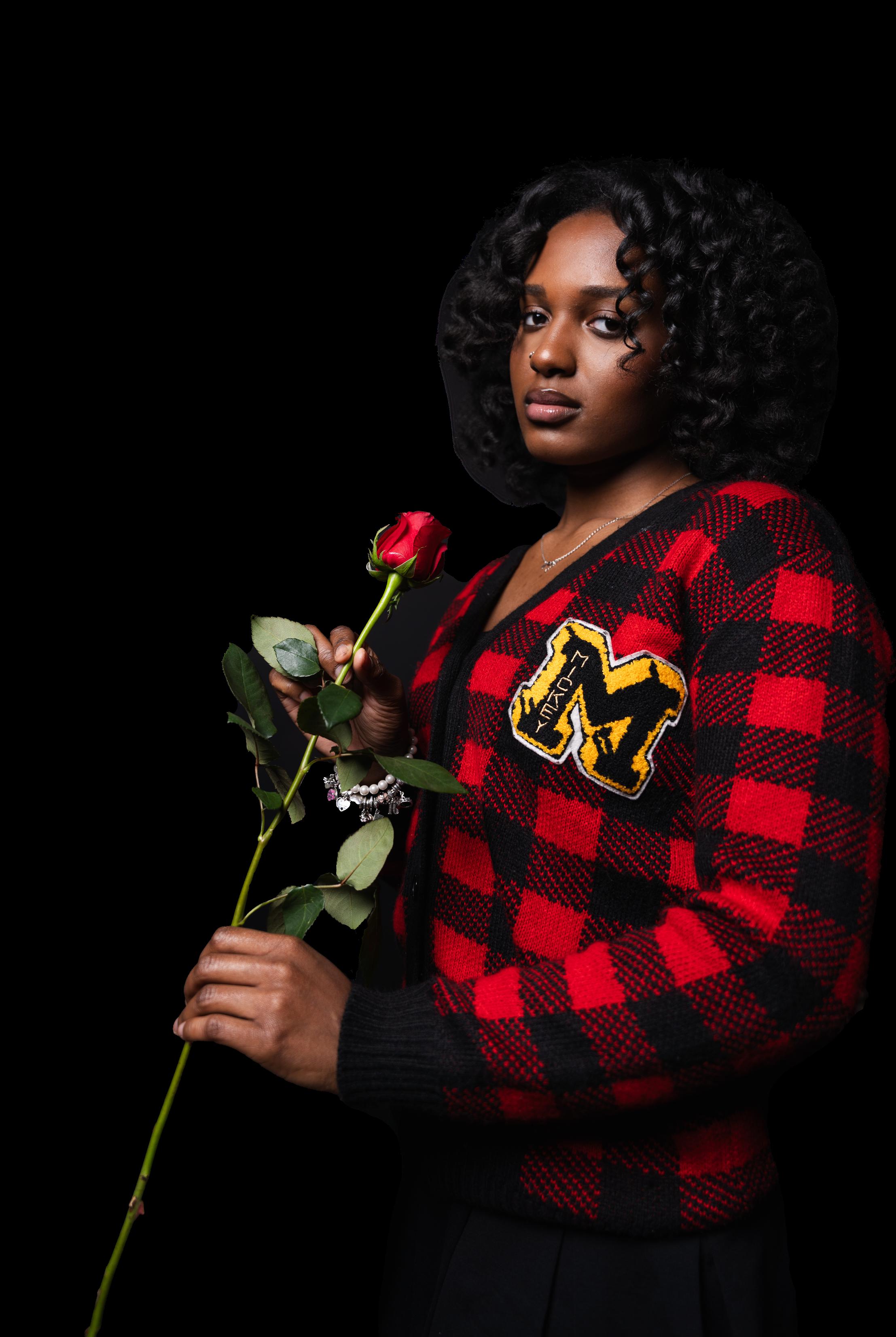
THE MARQUETTE JOURNAL 57

WHEN THE SMOKE CLEARS

Beauty on the Horizon
“When the day draws to a close and the setting sun sinks beneath the clouds, we can see clearly what a beautiful world it is that we live in.”
59 THE MARQUETTE JOURNAL 58 April 2024
Photo By Keifer Russell













 Written By Connor McPherson
Photo By Katie Craig
Written By Connor McPherson
Photo By Katie Craig


 Photo By Keifer Russell
Written By Izzy Fonfara Drewel
Photo By Keifer Russell
Written By Izzy Fonfara Drewel


 Written By
Written By






 Photo By Katie Craig
Photo By Katie Craig








 Written By Dakota Barnes-Rush and Benjamin Hanson
Written By Dakota Barnes-Rush and Benjamin Hanson















